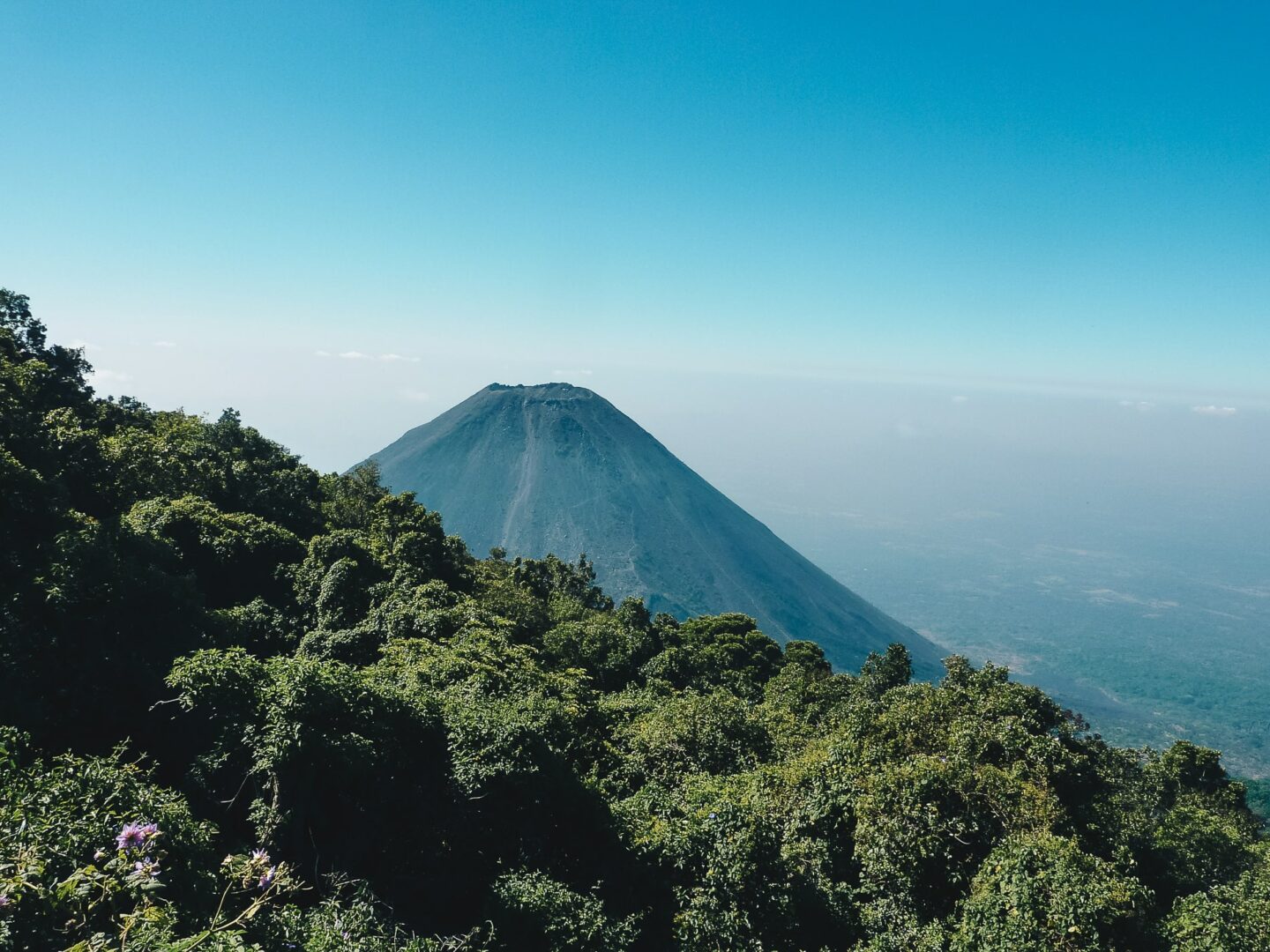
How about a trip to El Salvador? This country, still little-known to travelers, is slowly coming out of the shadows, and deserves a detour and your attention. A look back at my experience in unfamiliar territory.
Looking for originality, authenticity and countries far removed from mass tourism? Let me introduce you to Salvador, not to be confused with Salvador do Bahia in Brazil.
I invite you to see our article on the practical guide to El Salvador to prepare for your trip
SOMMAIRE DE L'ARTICLE :
| PRESENTATION OF SALVADOR
Welcome to El Salvador. A small country forgotten by all, but so beautiful. El Salvador is Central America’s smallest and most densely populated country, wedged between the Pacific, Guatemala to the west and Honduras to the north. After 12 years of bloody civil war, El Salvador is now a stable parliamentary republic. El Salvador has been open to tourism for a shorter time than its neighbors, but is slowly making its mark among the neighbouring giants. While the Pacific coast is becoming increasingly popular with surfers from all over the world and is ideal for beach tourism, the inland, shaped by numerous volcanoes, offers a host of adventure possibilities.
Wild beaches and islands, charming colonial villages, coffee plantations in the mist, the flower route, a Unesco-listed Mayan site, the immense Lake Coatepeque, a country rich in history, a plethora of volcanoes, El Salvador is sure to seduce you.
I discovered this country in 2011, during our 6-month trip to Central America. I had just arrived from Guatemala, and was strongly advised by Mexicans and other locals not to visit El Salvador because of the almost daily clashes between gangs. I’ll tell you all about it in the paragraph below. I was stubborn enough to want to go, but I didn’t regret my choice.
My experience in El Salvador is a little special, as I was invited to stay with a friend for two weeks in a heavenly villa on the shores of Lake Coatepeque, in the north of the country, the starting point for my many excursions. Suffice it to say that it was a great opportunity to take advantage of the small boat that was made available to us on the lake, to enjoy the water sports, to take in the breathtaking view of the Santa Ana volcano, to recharge the batteries and to cook the local produce. It was here, in the company of an endearing Salvadoran woman, that I learned to make the best ceviche I’ve tasted in all my travels in Latin America.
With one of the best road networks in Latin America and a small surface area, El Salvador is very easy to visit, as bus transport works well. These are colorfully repainted American buses, but they’re not always comfortable for long journeys lasting a few hours. We call them “Chicken buses” because we’re all squeezed in! The capital, San Salvador, is set in a spectacular volcanic landscape, and is home to numerous museums and the National Theatre. From the capital, there are many ways to criss-cross the country. It’s a 30-minute drive to the beach and a 20-minute drive to the nearest volcanoes.
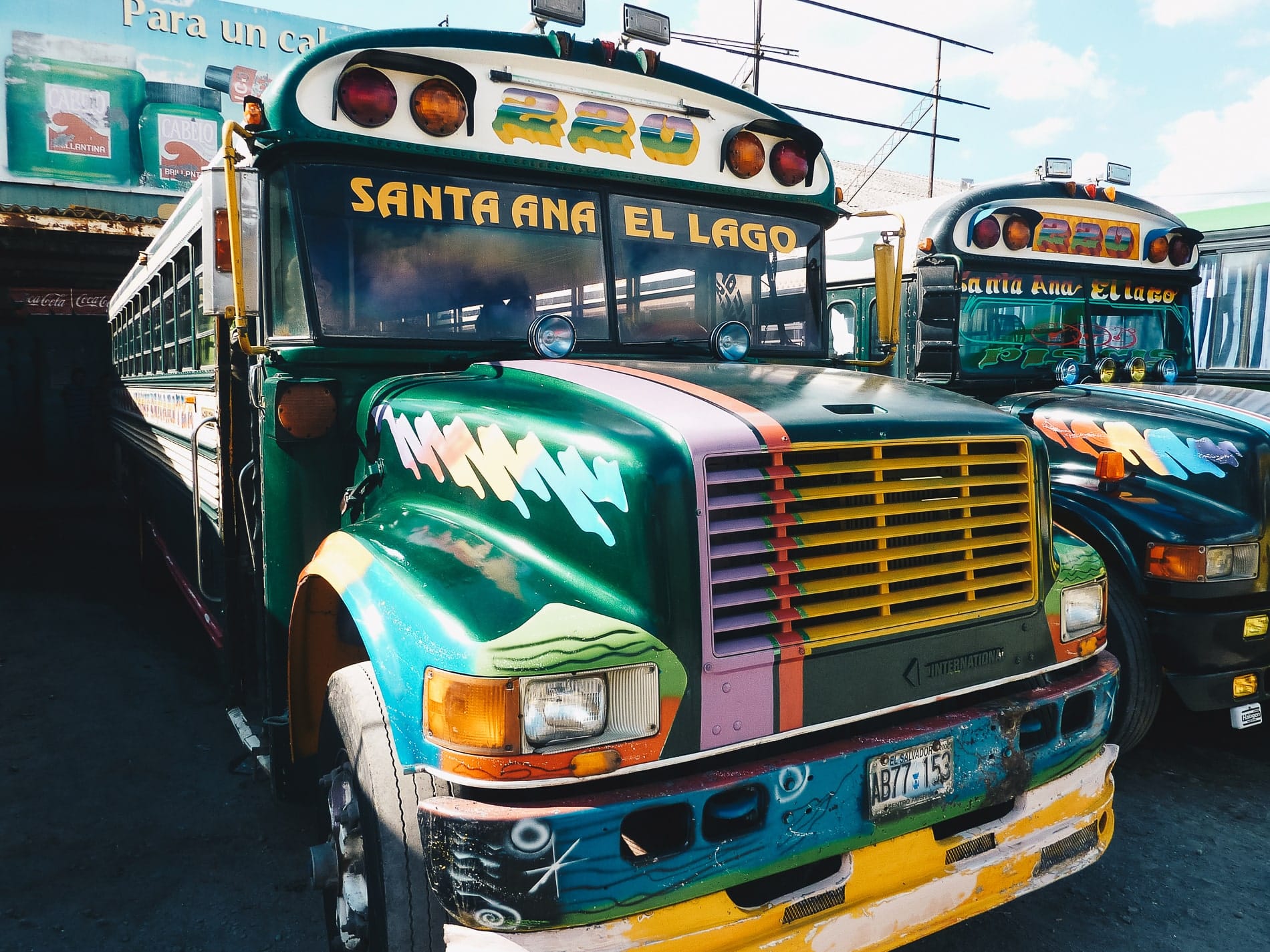
| If you want to see what the local bus scene is like!
| WHAT TO SEE IN SALVADOR
-
Volcanoes National Park
El Salvador is a lush country with no fewer than 25 extinct volcanoes, a few clear lakes, former craters (Santa Ana, llopango and Güija lakes) and a large network of rivers. The highest volcano, the Santa Ana also known as Ilamatepec, culminates at 2,381 metres. The Parc national from Cerro Verde, to the south of Santa Ana, offers extraordinary views of the volcan Izalco, the country’s youngest, but also the country’s emblem and Lake Coatepeque. The latter, of a pure blue, is a huge crater at the foot of the Santa Ana volcano and I could admire it every day! It’s the perfect place for lovers of hiking and beautiful landscapes.
We decided to climb the country’s youngest volcano, Izalco. It earned the nickname “Lighthouse of the Pacific” because sailors could see it from a great distance. Today, he is one of El Salvador’s icons. The volcano is not very high, at 650 meters, but the climb is not easy. The volcano is exposed to direct sunlight, and you have to climb one of its flanks in the sweltering heat. You then sink into volcanic rocks and pebbles, slide, advance through sand, go back 10 metres and struggle to climb! At that moment, I just wanted to scream and stop everything! But believe me, the reward at the top of the crater is unbelievable: the smell of sulfur rising from the crater, a breathtaking view of Cerro Verde, the green expanses of El Salvador and the Pacific Ocean. A pure moment of happiness!
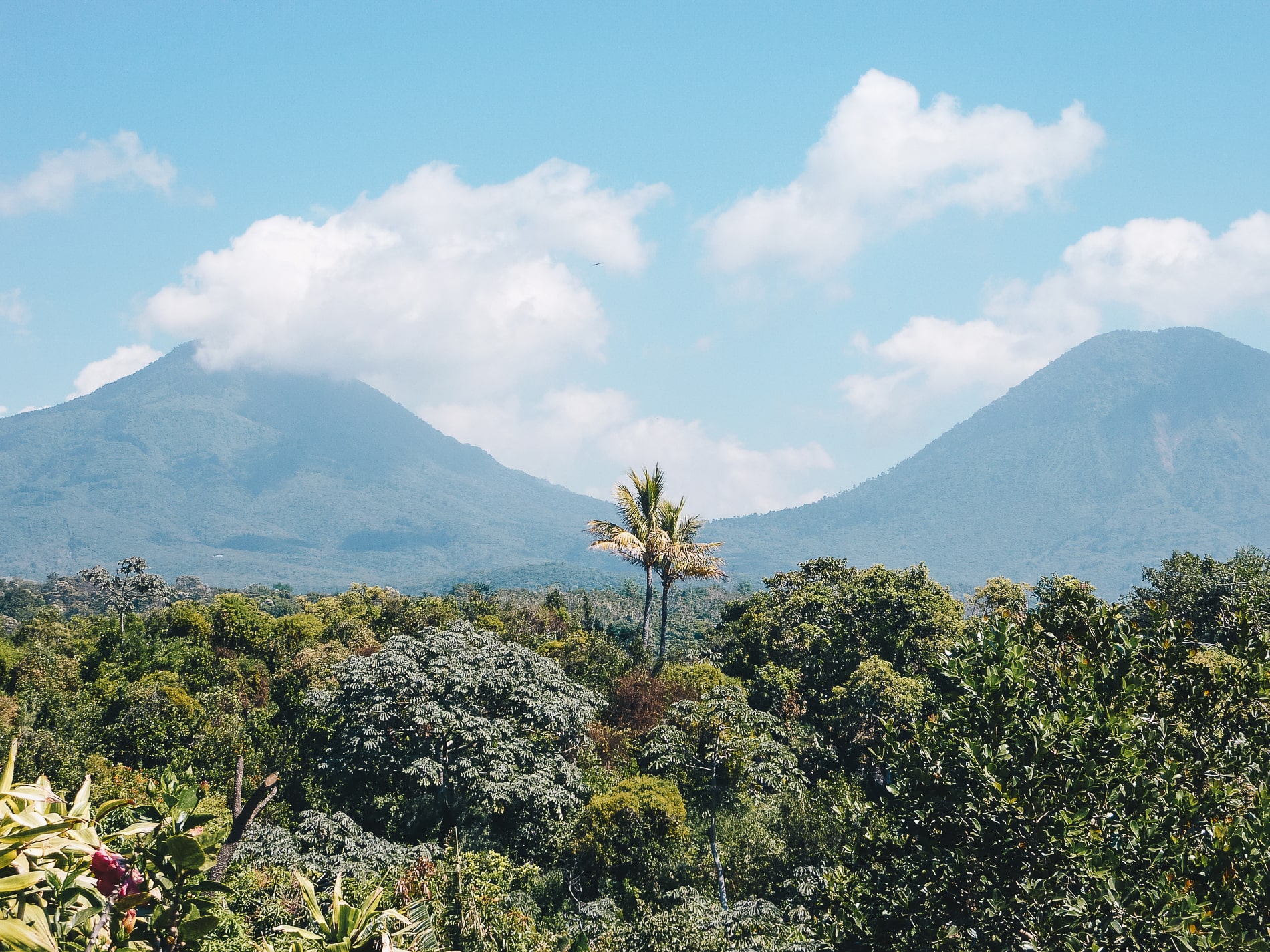
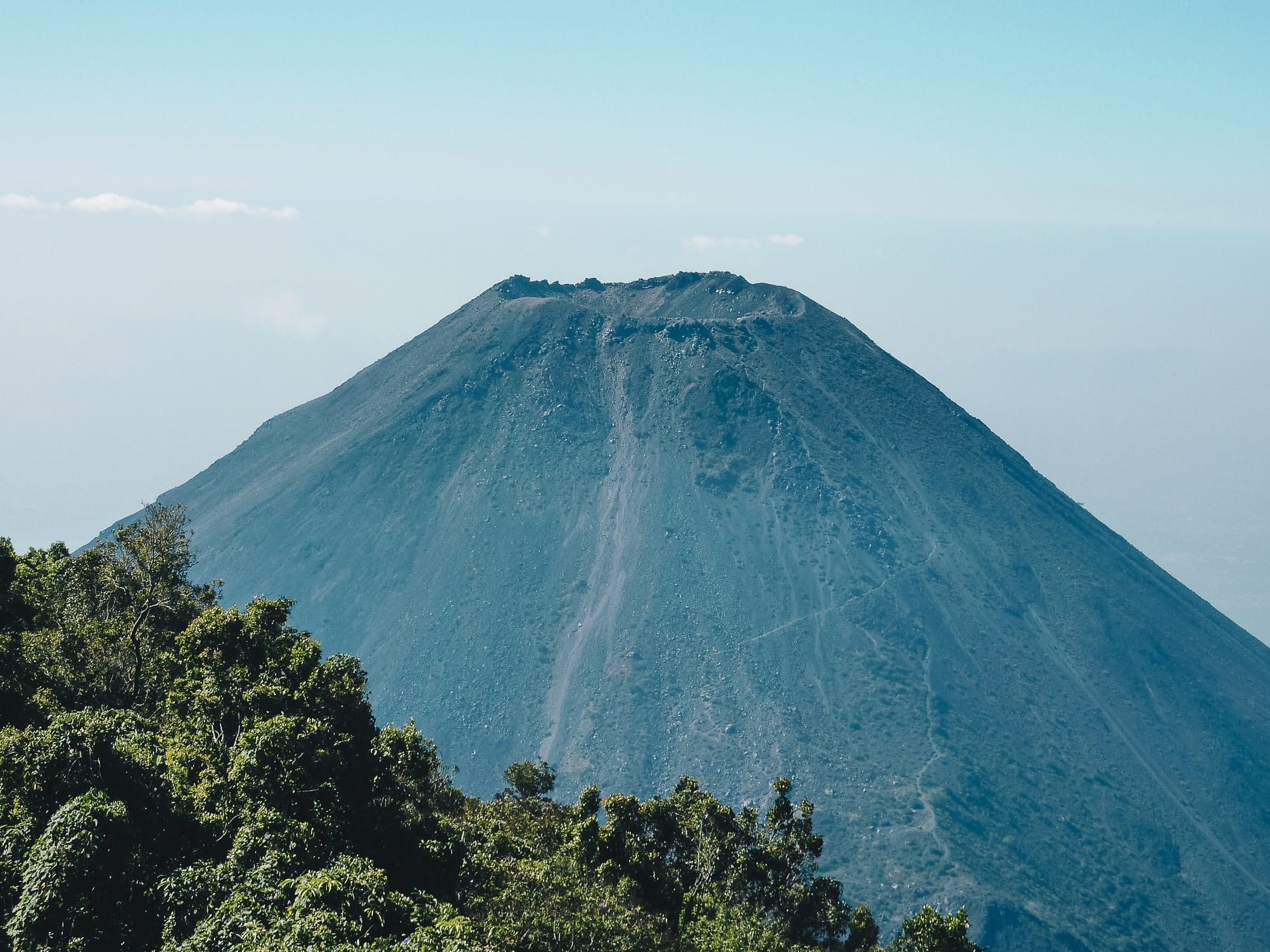
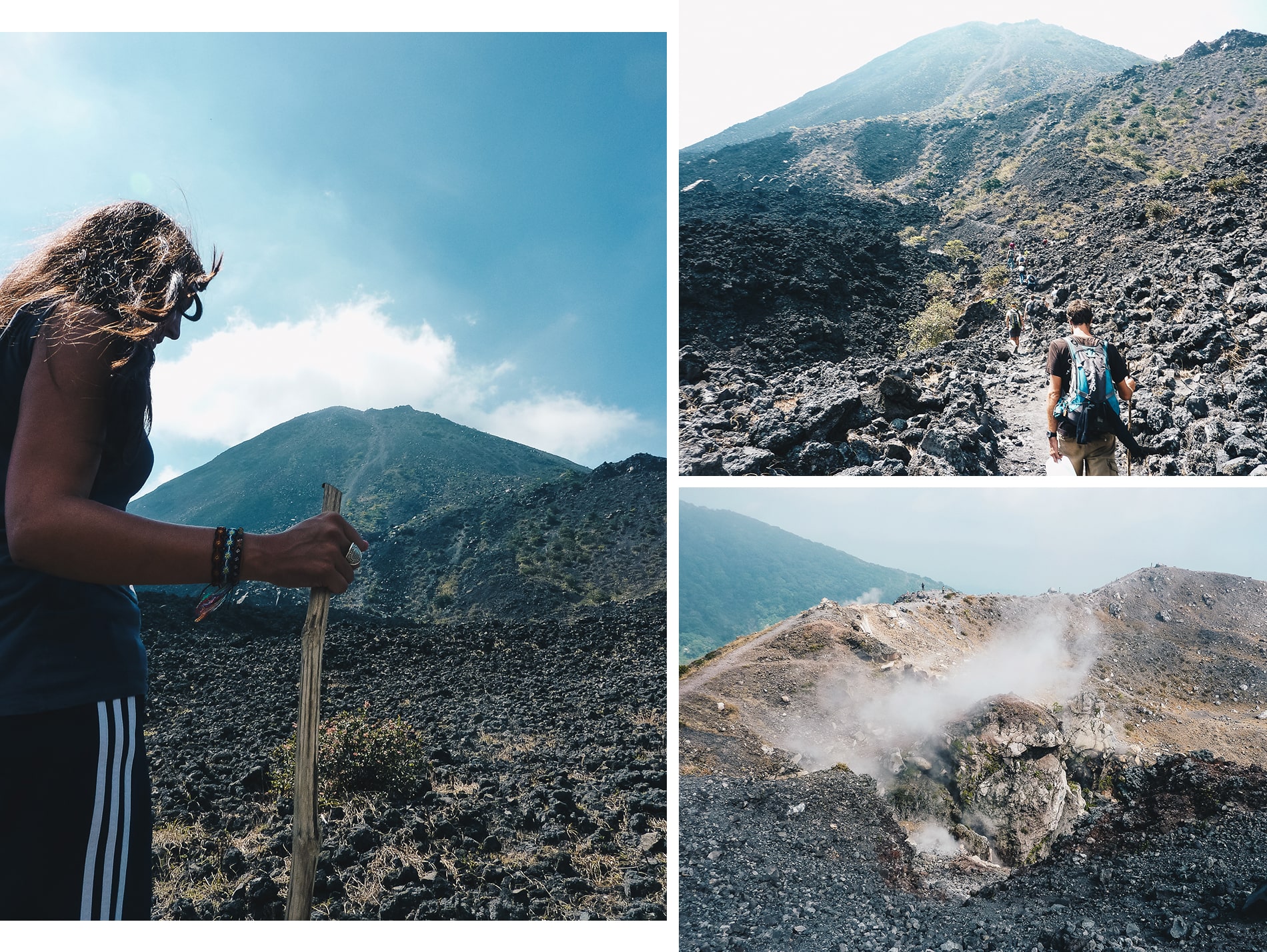
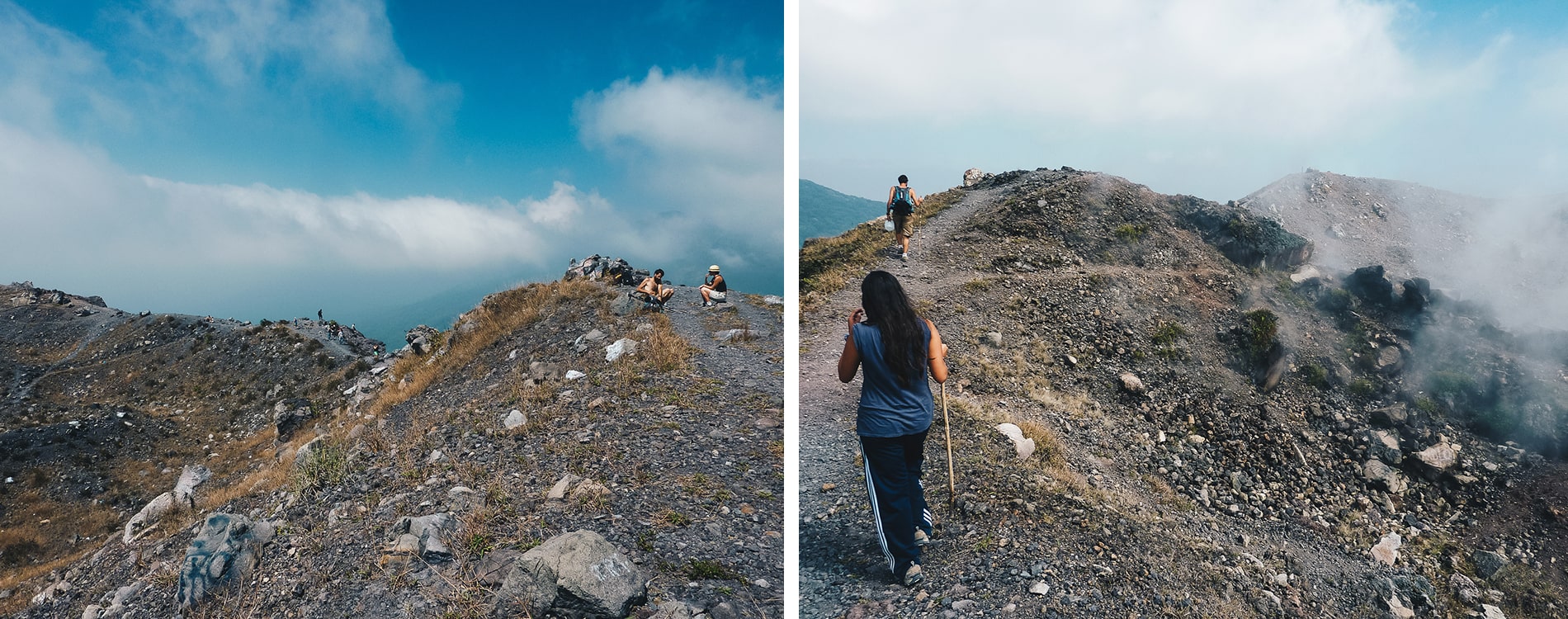
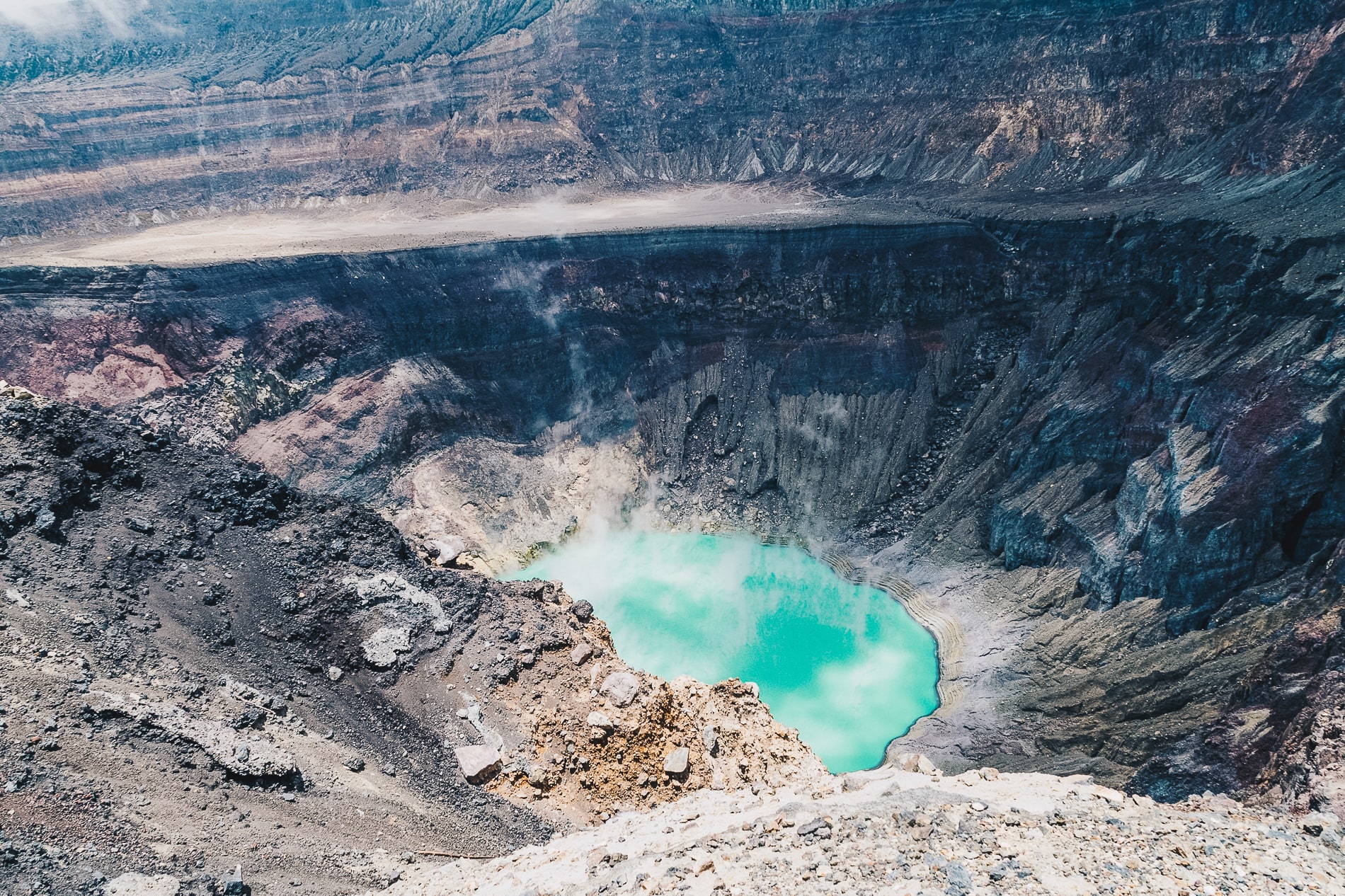
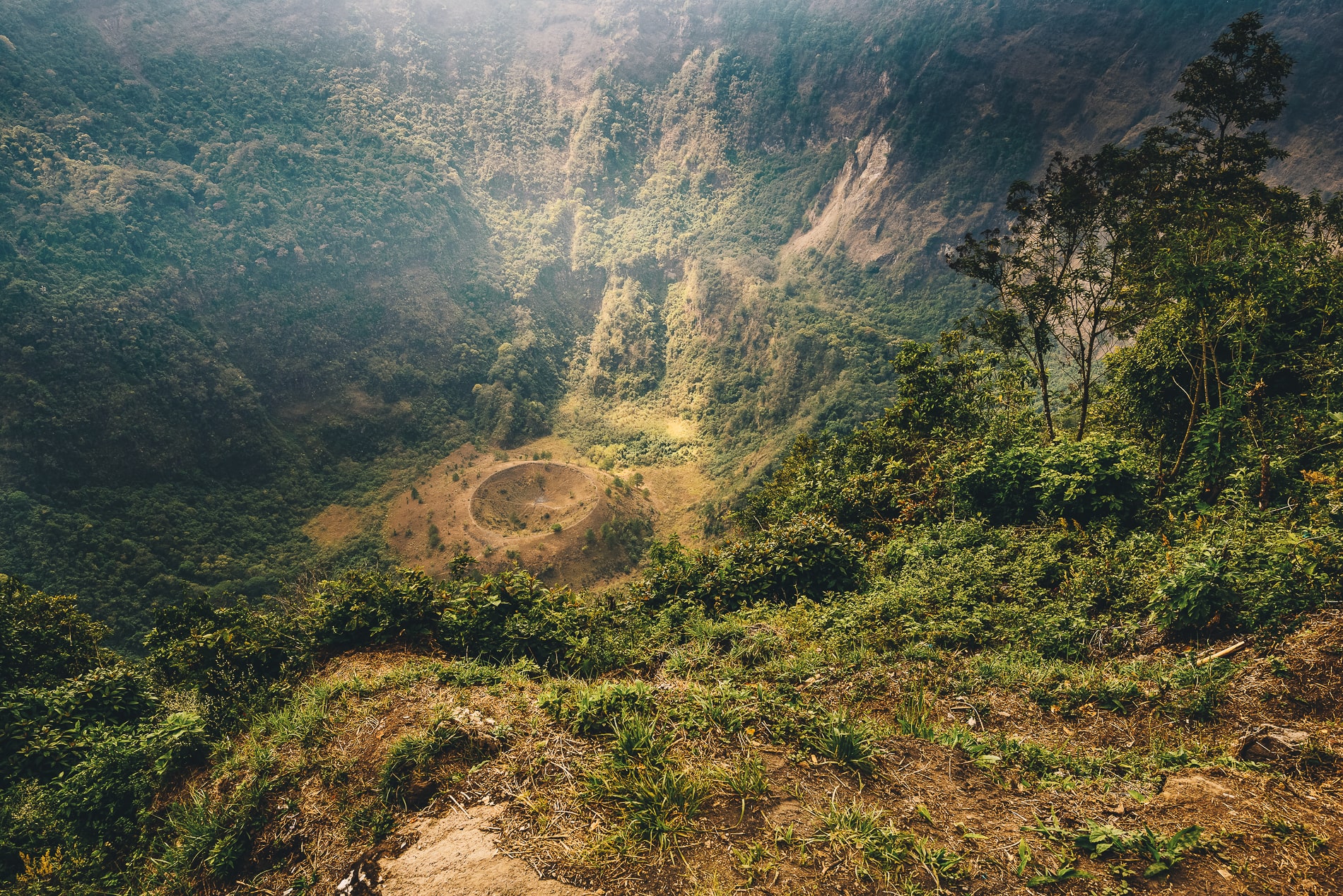
-
The flower route, charming villages and handicrafts
This winding mountain road linking Sonsonate à Ahuachapán, is nicknamed the Route Flowers. The “Ruta de Las Flores”, as it’s known in Spanish, is a winding road through coffee plantations, tropical forests with numerous waterfalls, local markets and charming villages renowned for their handicrafts, such as indigo blue and hammocks. For 36 kilometers, we crossed the heart of the country, where waterfalls, coffee plantations, fincas (the term used to describe Latin American ranches) and charming little villages intertwined. This itinerary is at its most sumptuous in May, when the white flowers of the coffee trees cover the surrounding landscape.
Juayúa is a small town surrounded by hills, where every weekend there’s a festival dedicated to gastronomy. The city is in full swing. The central square, the zocalo, is packed with people, as Juayúa is a popular meeting place for Salvadorans who come here with family or friends. We found a variety of dishes on a multitude of stands, it was hyper friendly and authentic. The locals loved chatting with us and sharing our cultures.
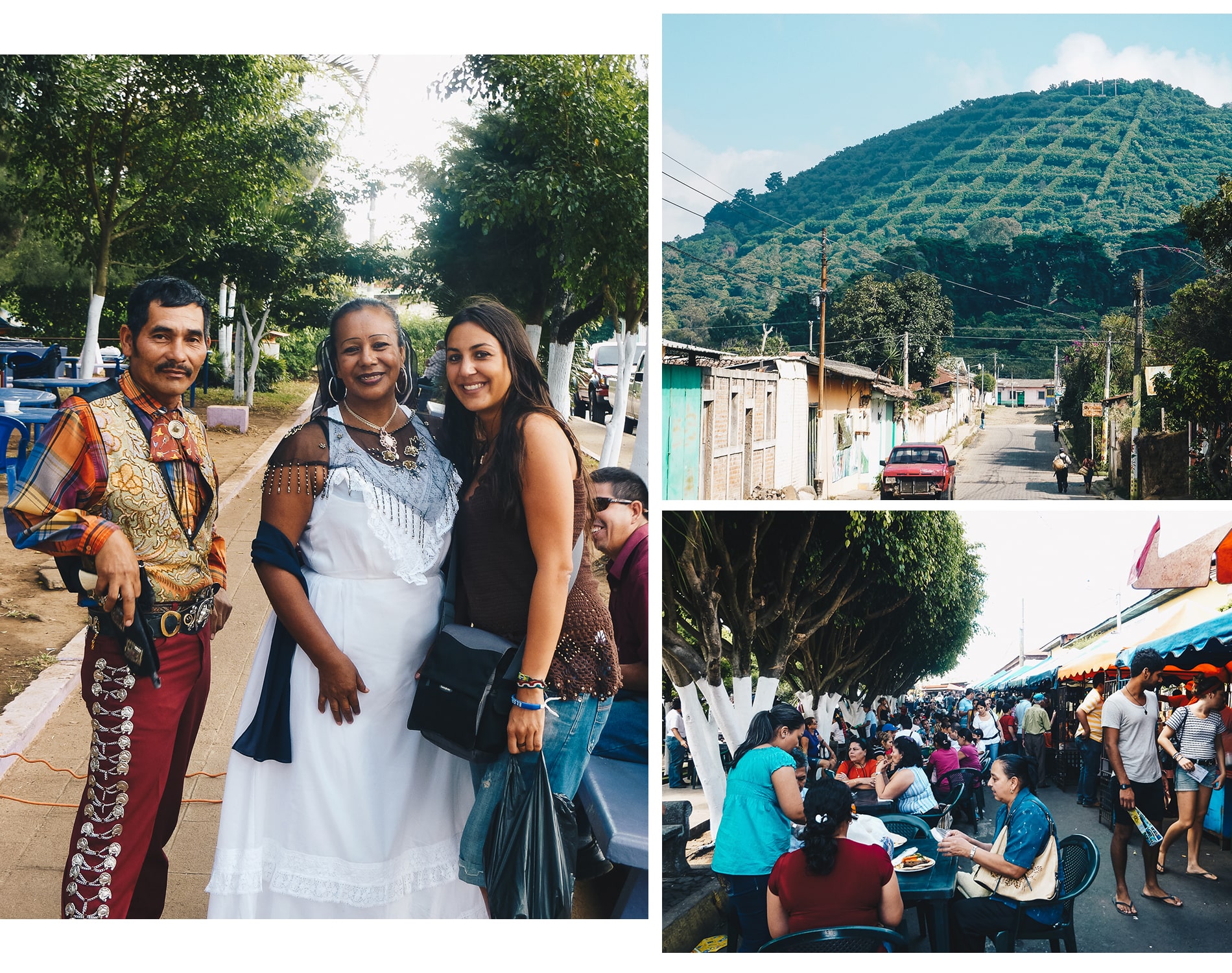
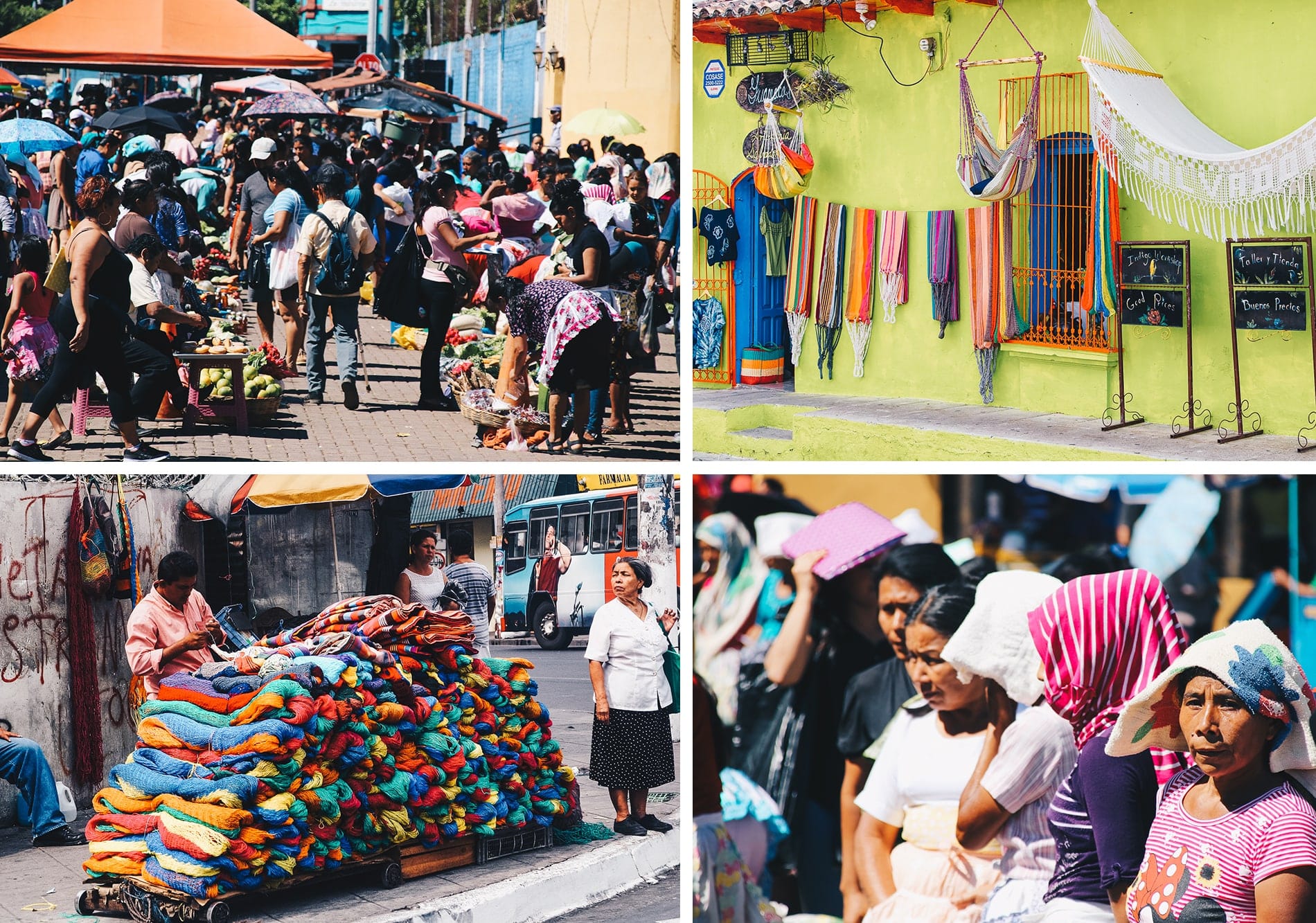
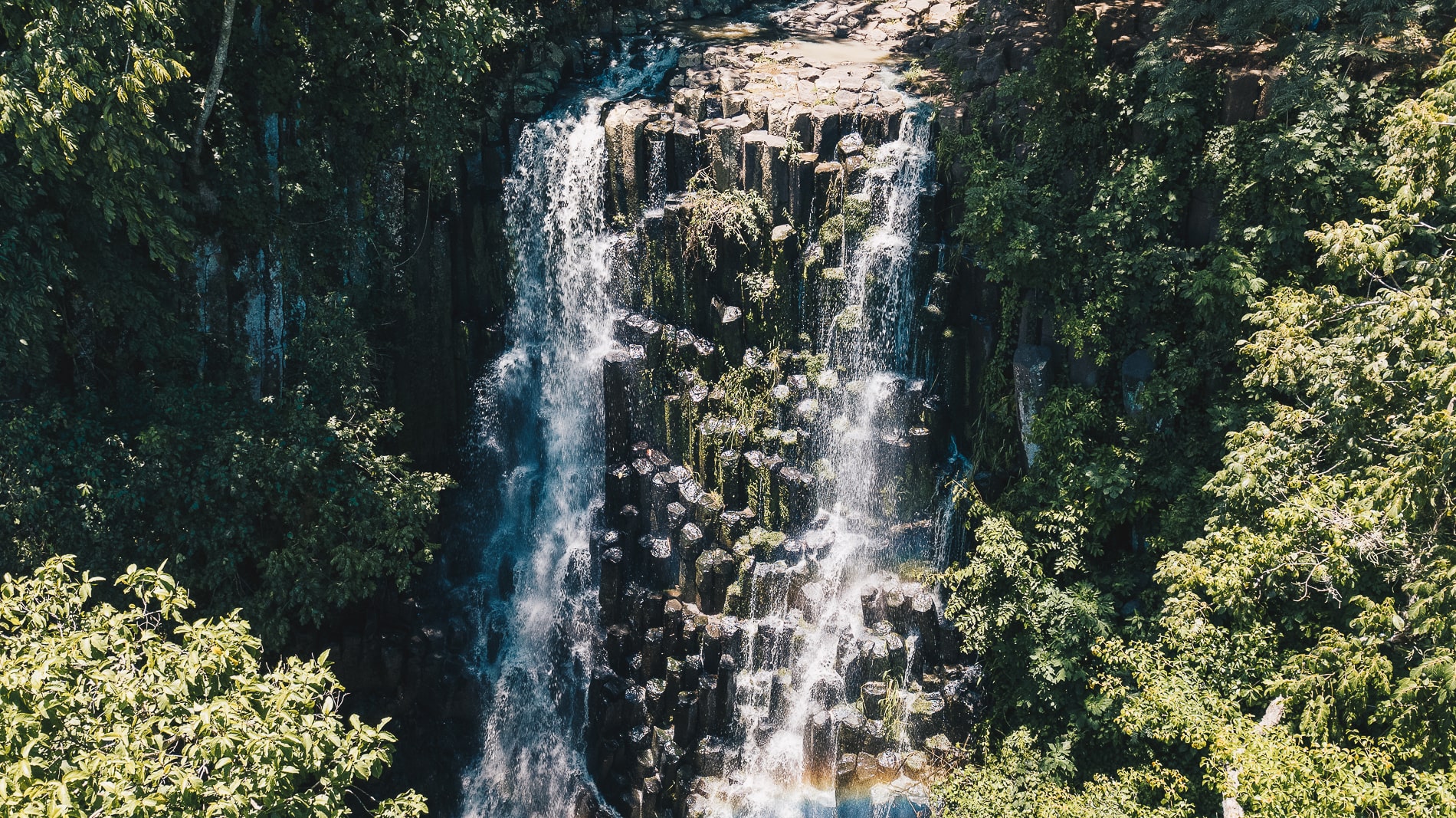
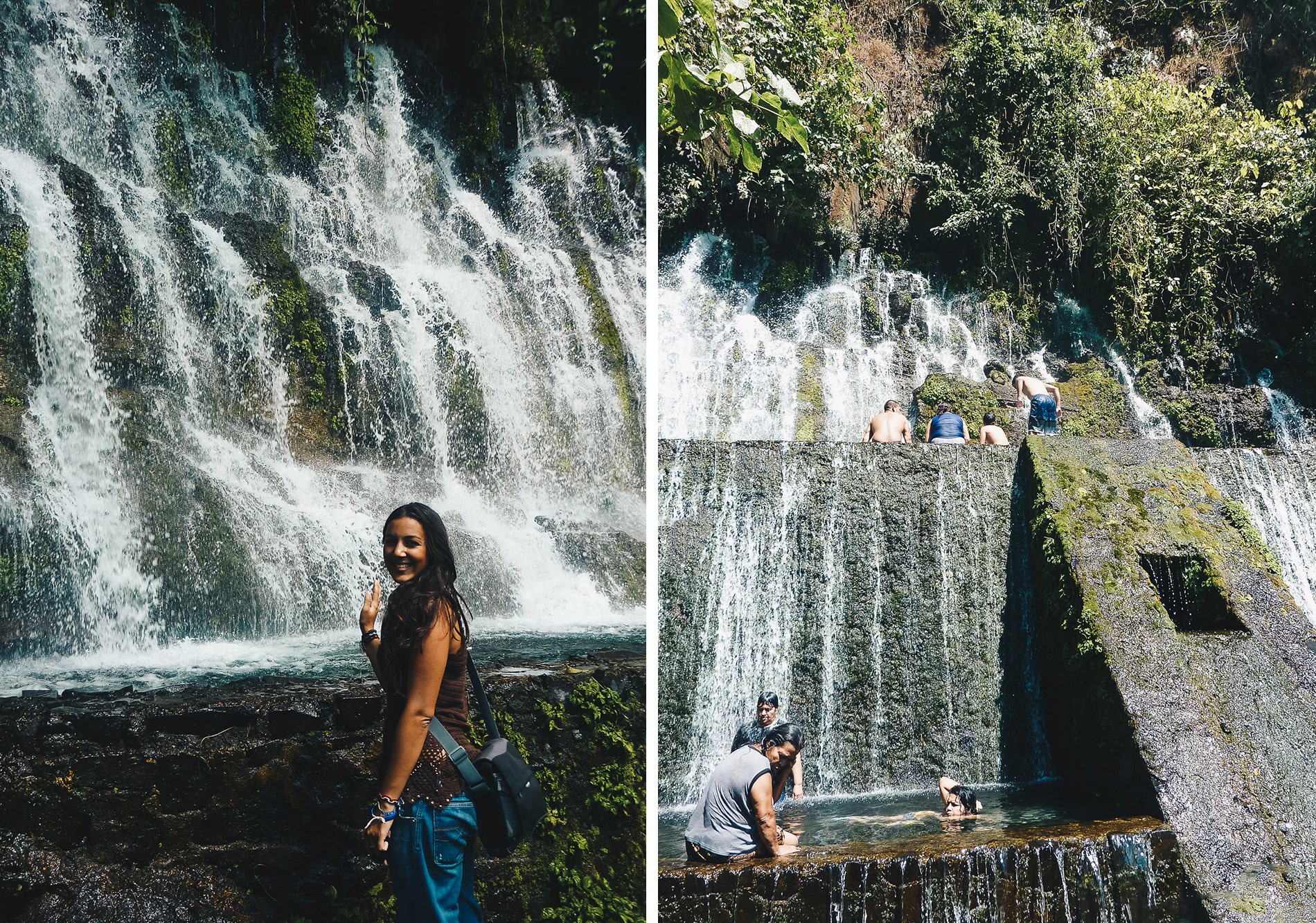
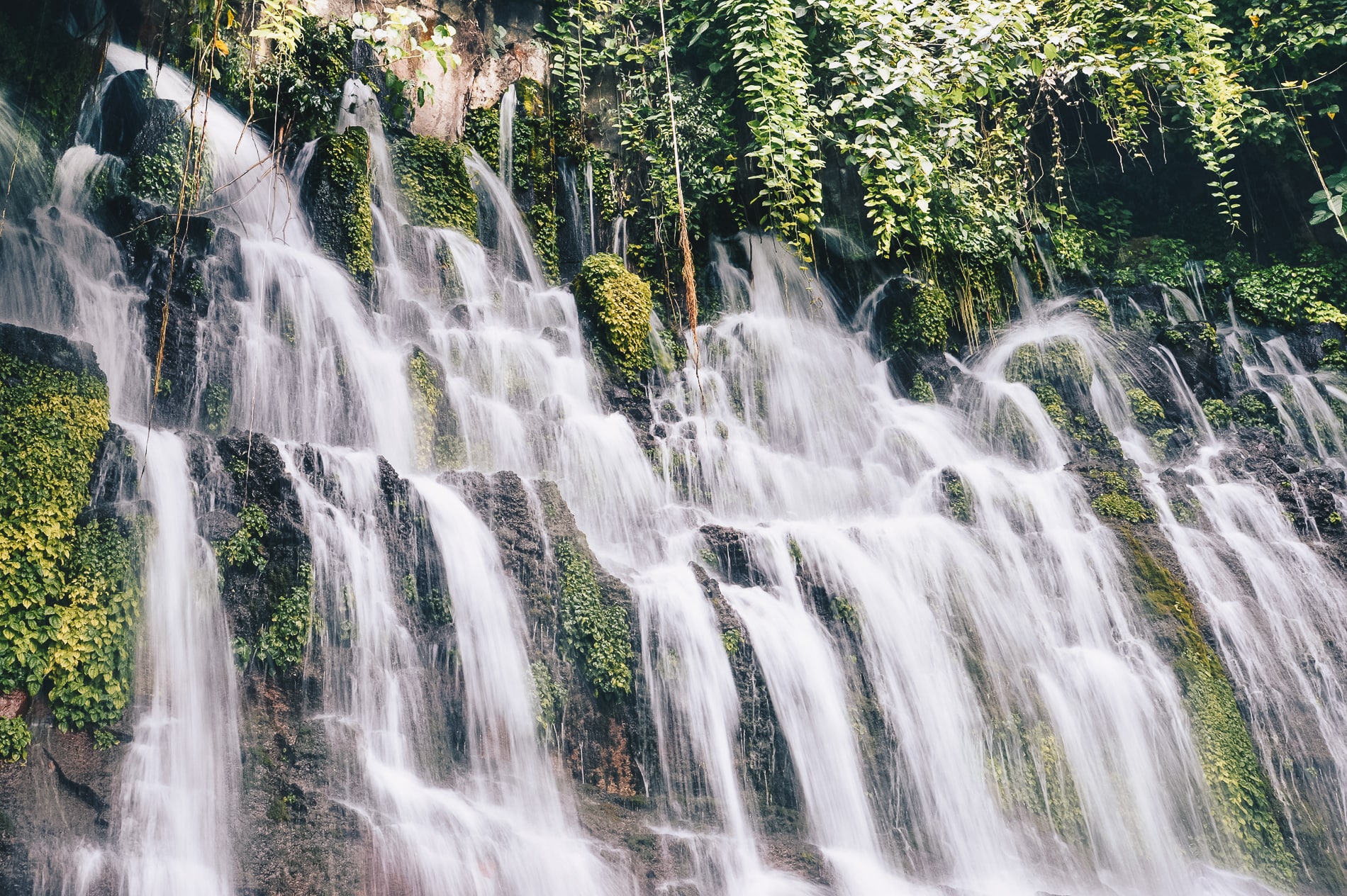
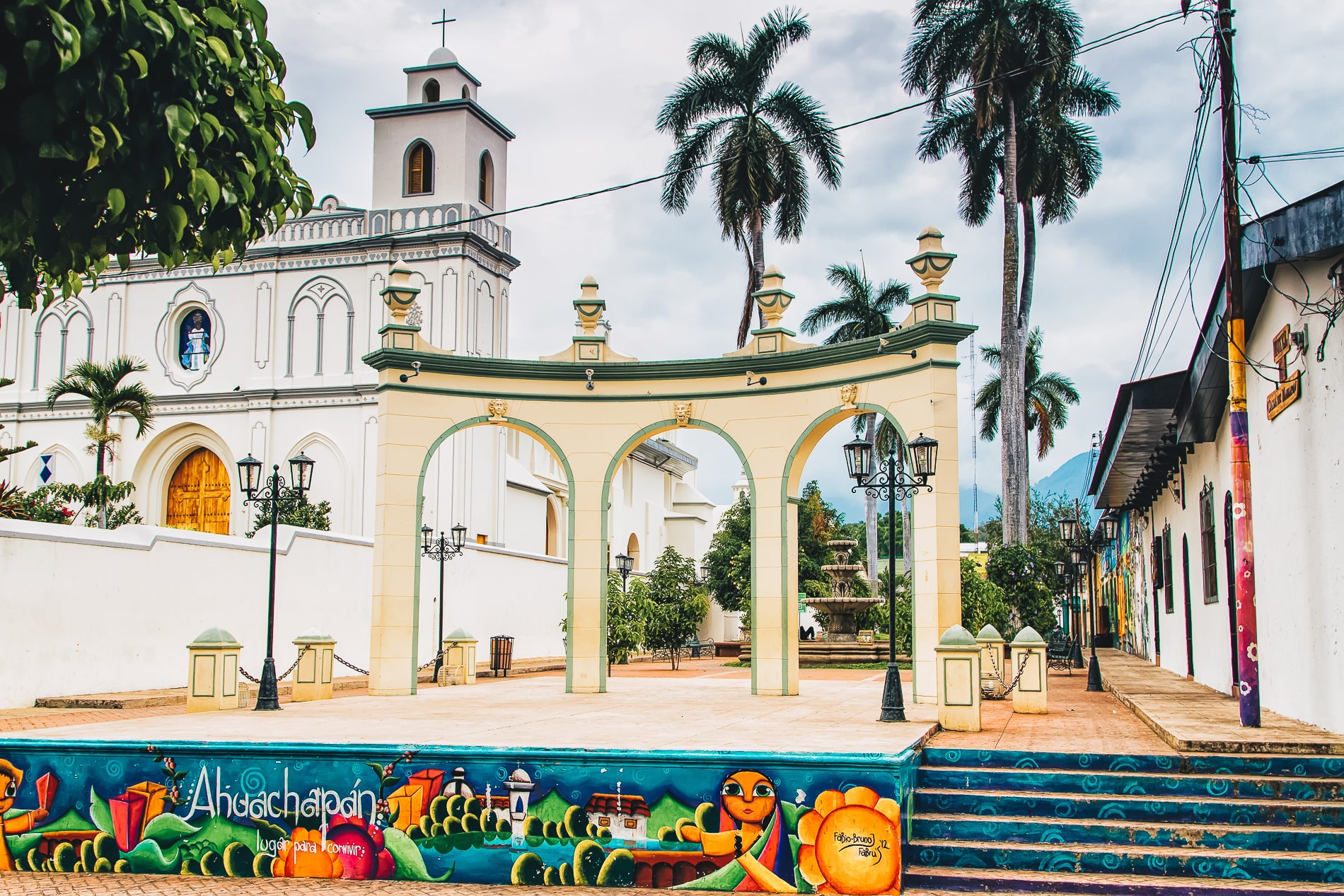
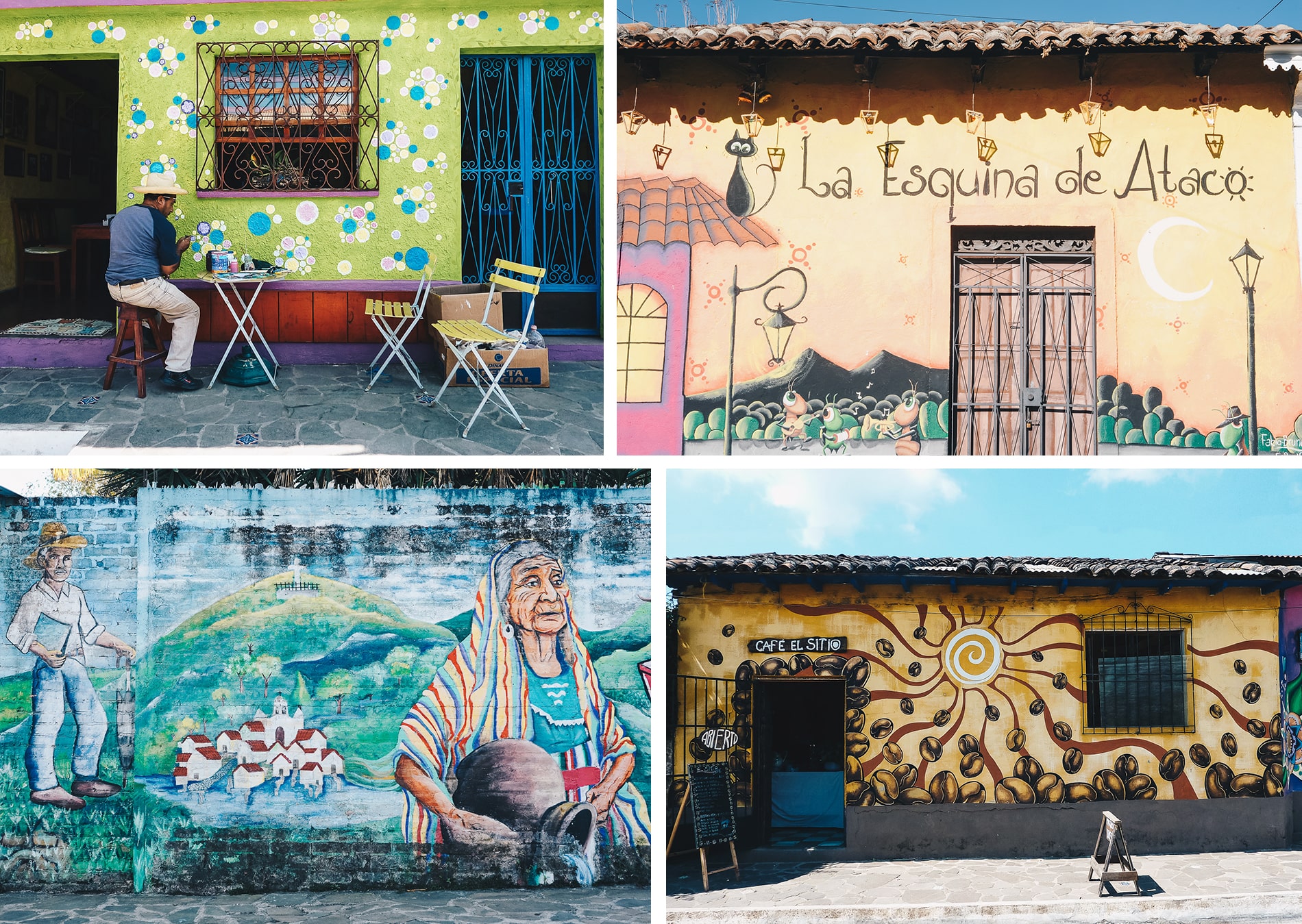
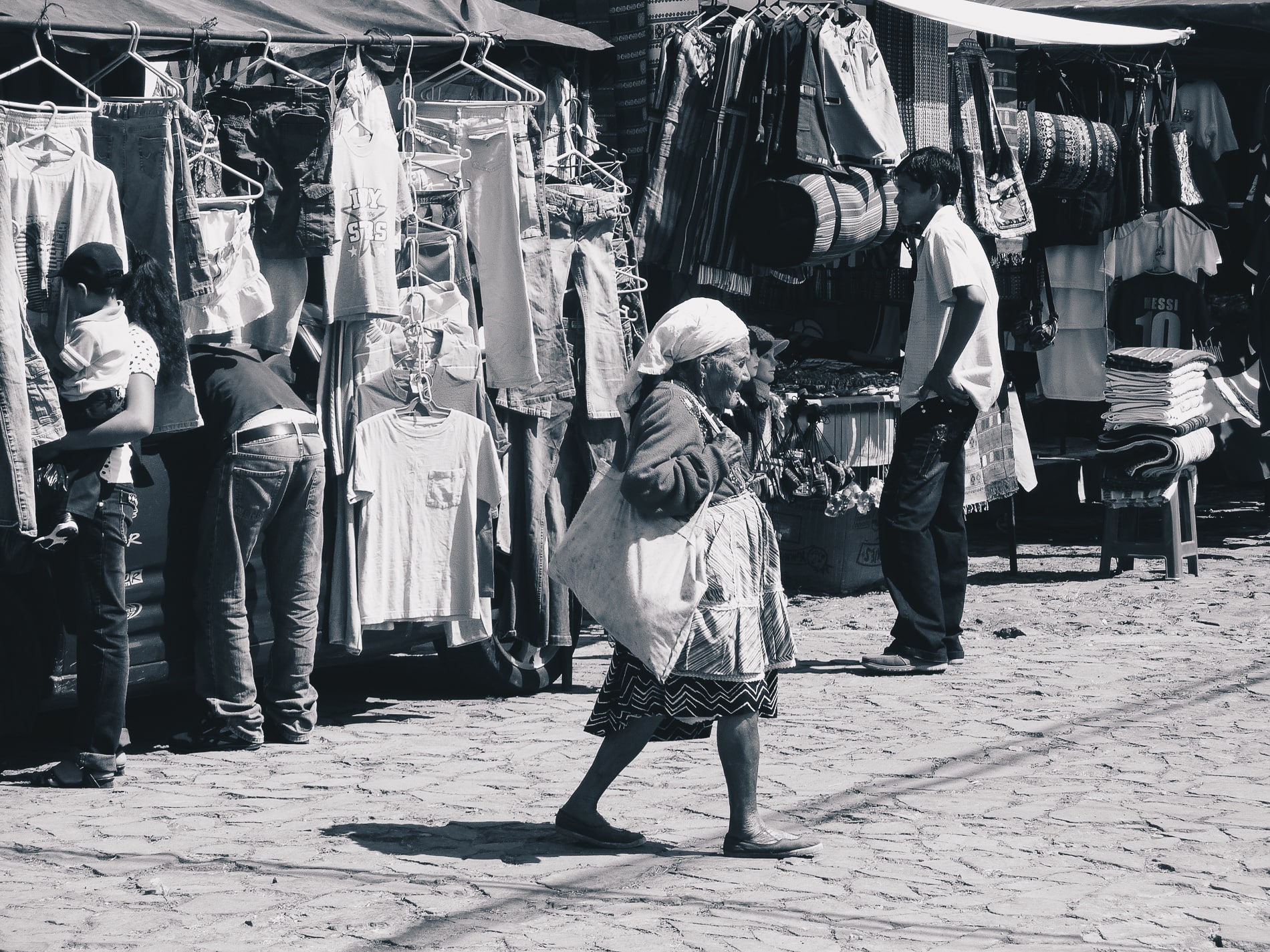
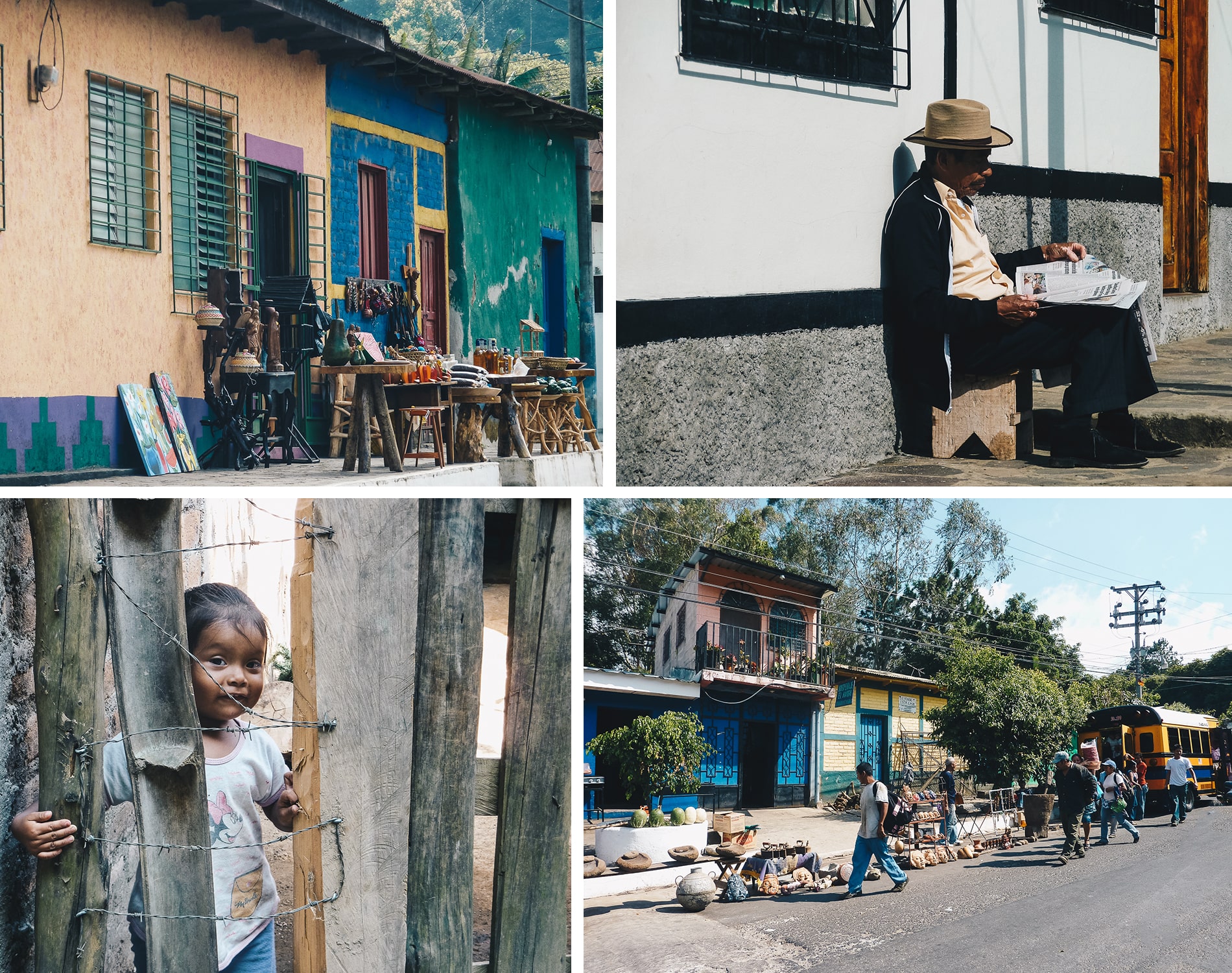
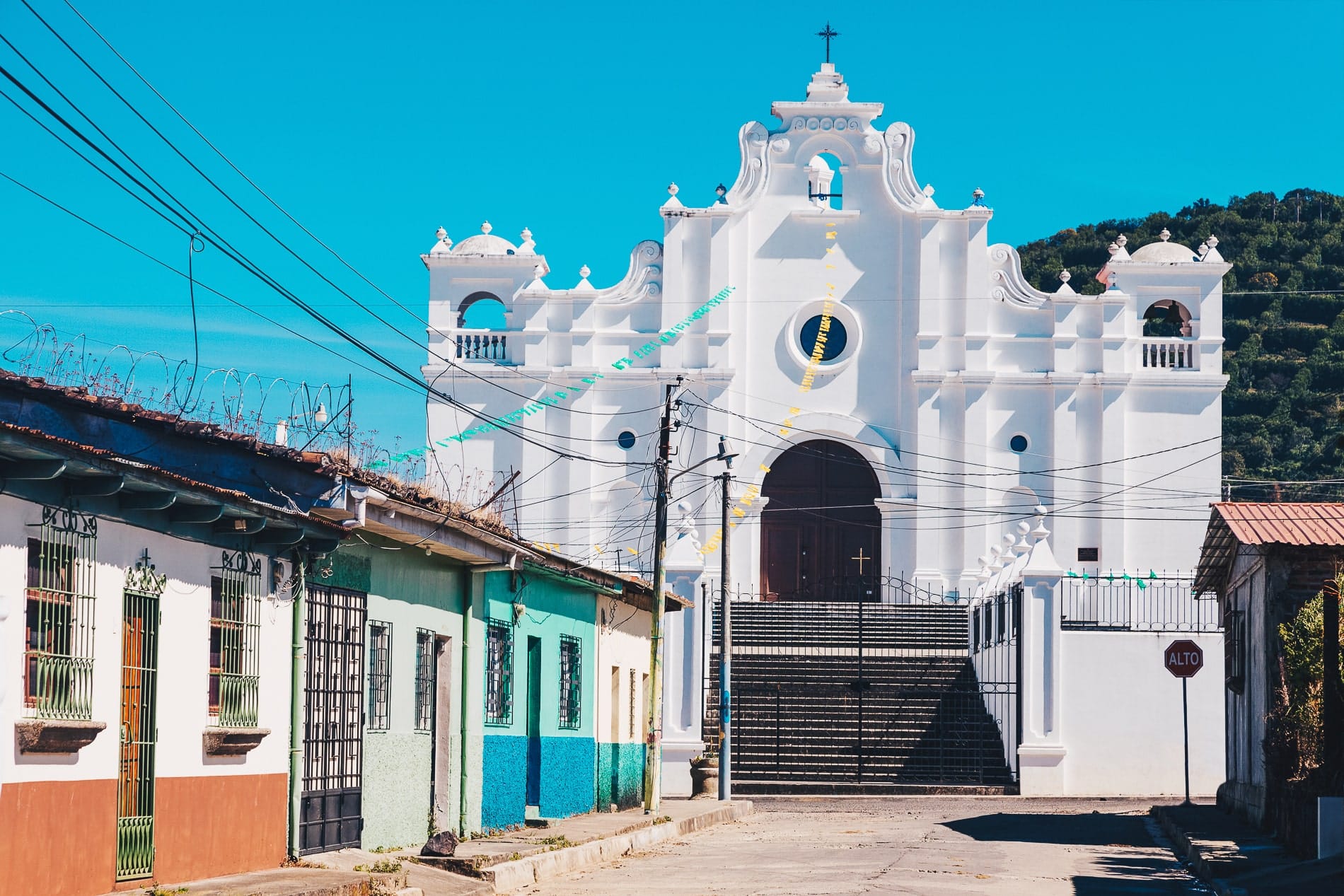
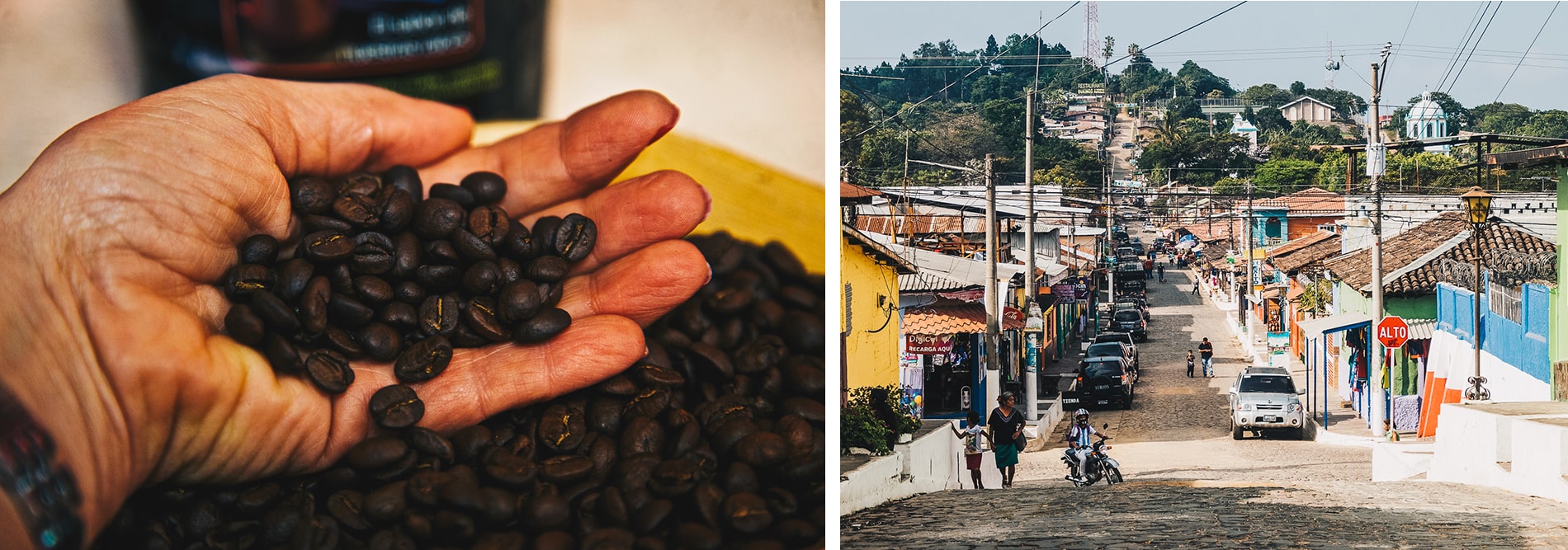
-
Coatepeque Lake
Lake Coatepeque is a crater lake in the caldera of a volcano that exploded tens of thousands of years ago. The lake is part of the Apaneca-Llamatepec Biosphere Reserve, recognized by Unesco in 2007. At an altitude of 745 metres and surrounded by the vegetation that covered the volcano’s crater, Lake Coatepeque is a popular destination for travellers and locals alike. There’s plenty to do here, including diving, sailing, jet skiing, swimming, canoeing, motorboating and other aquatic activities. Or simply cool off and have lunch by the water.
It’s in a great location, with the pretty town of Santa Ana nearby, as well as the Volcanoes National Park (Izalco, Cerro Verde and Santa Ana) and the archaeological route from San Andres to Tazumal.
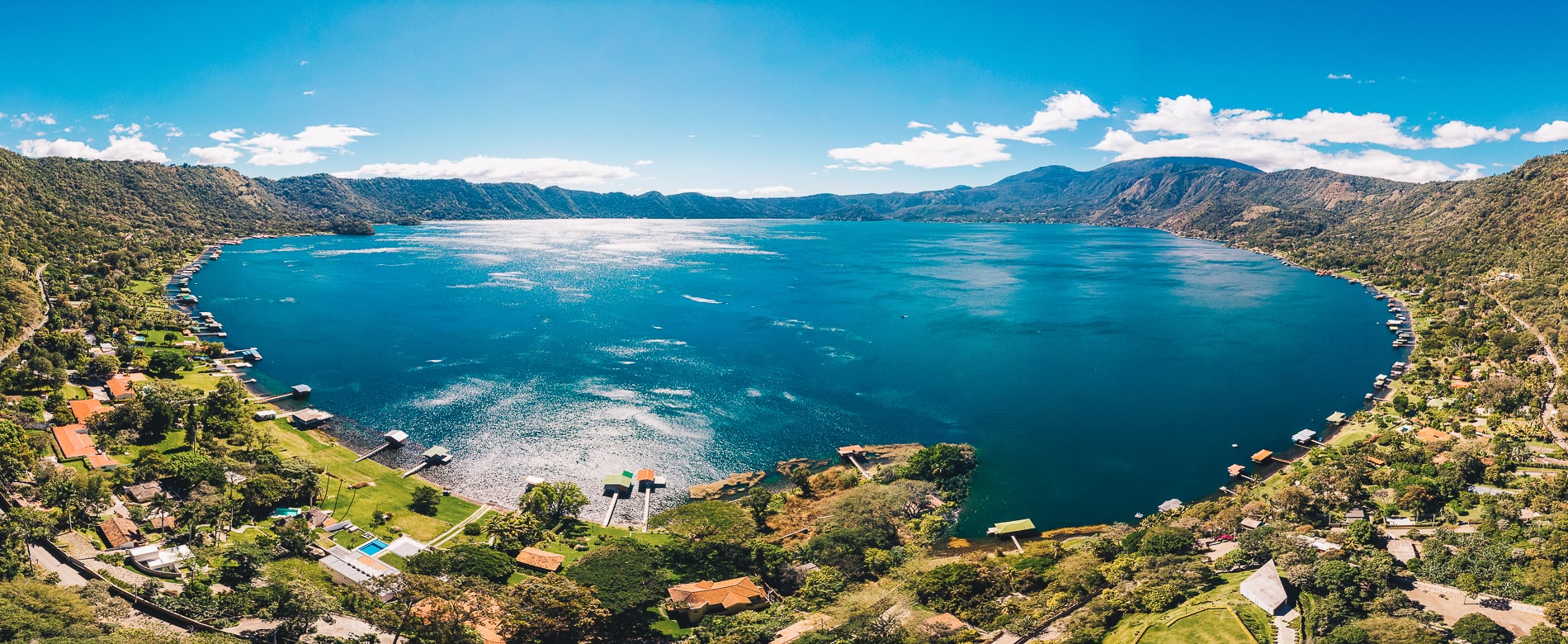
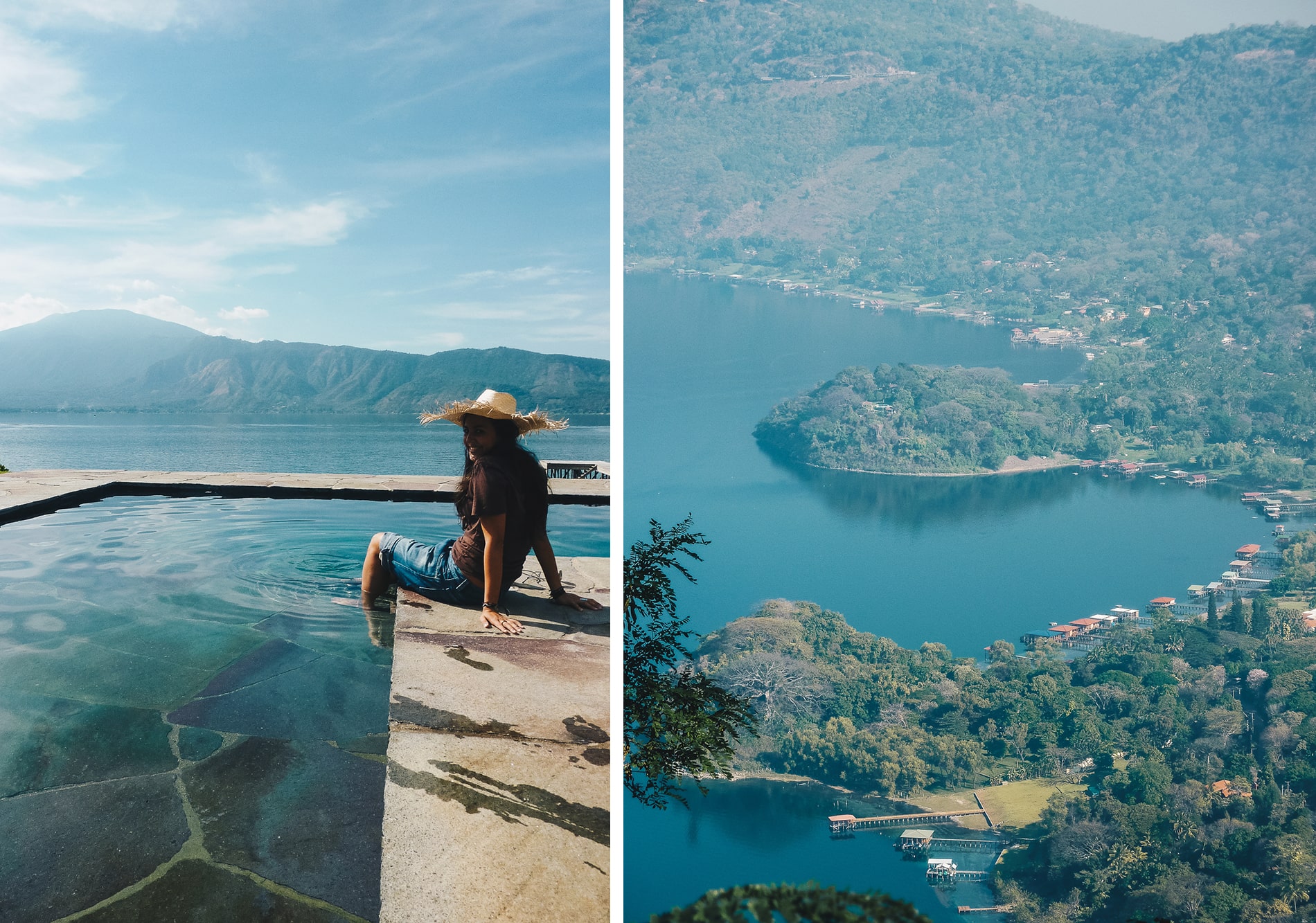
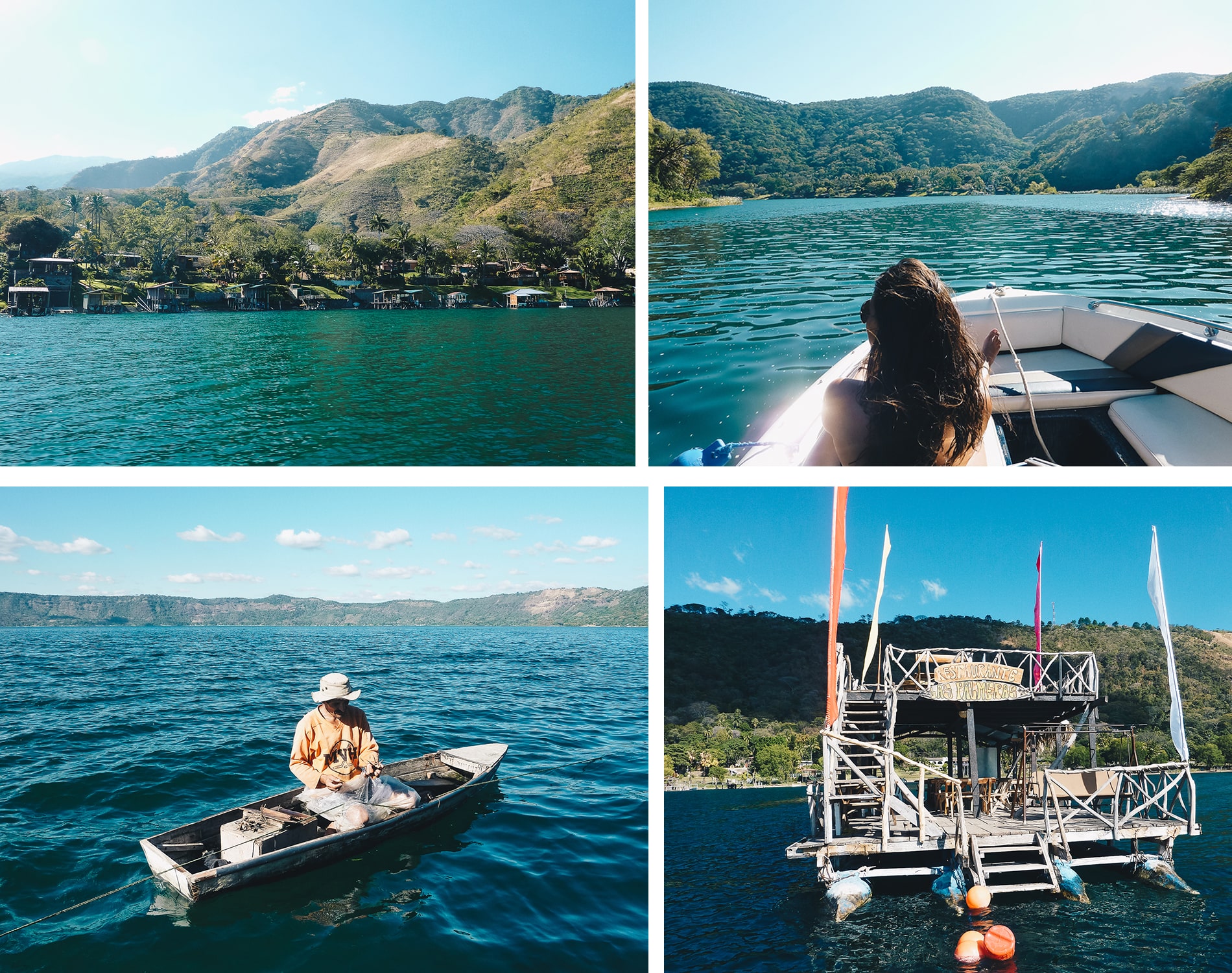
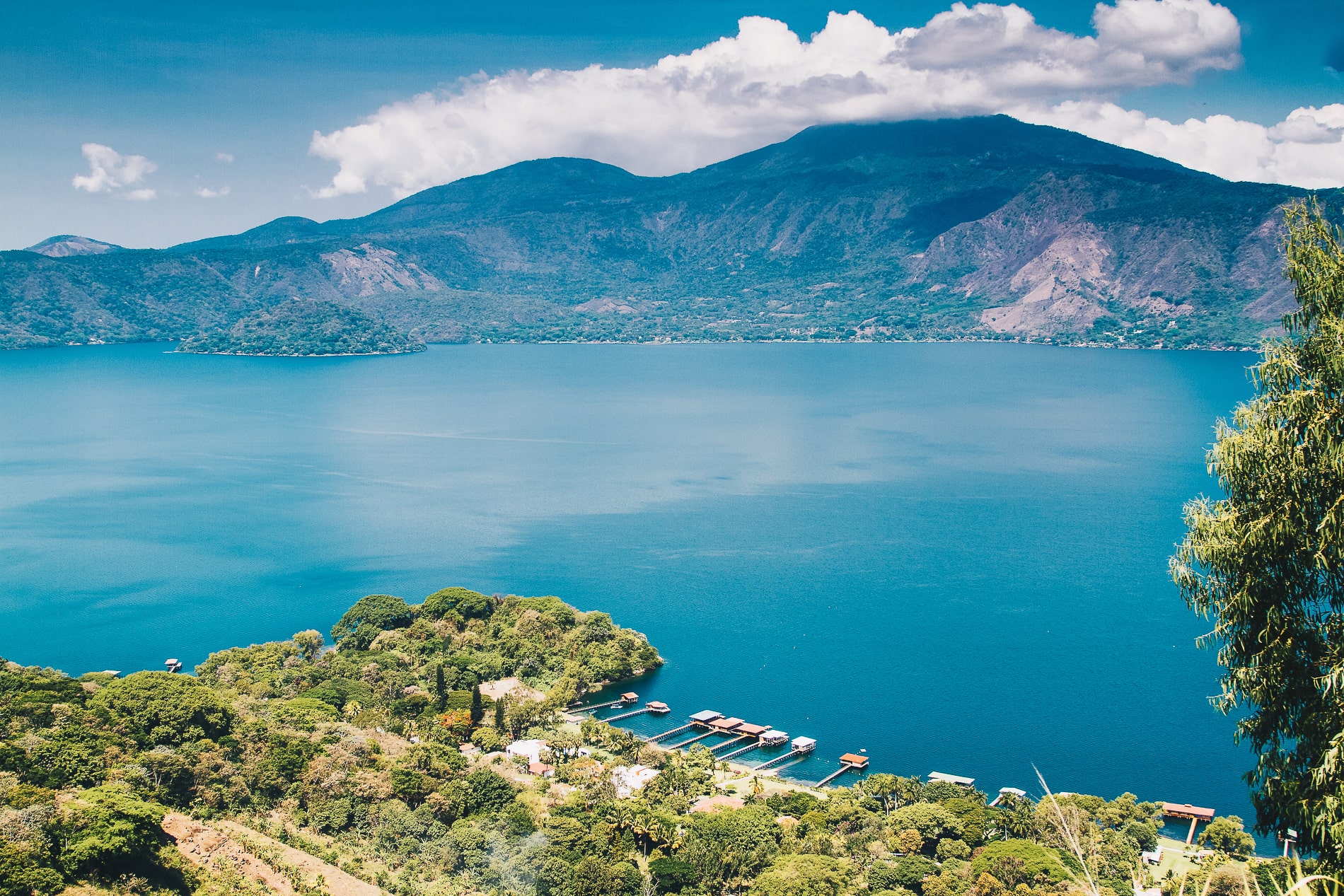
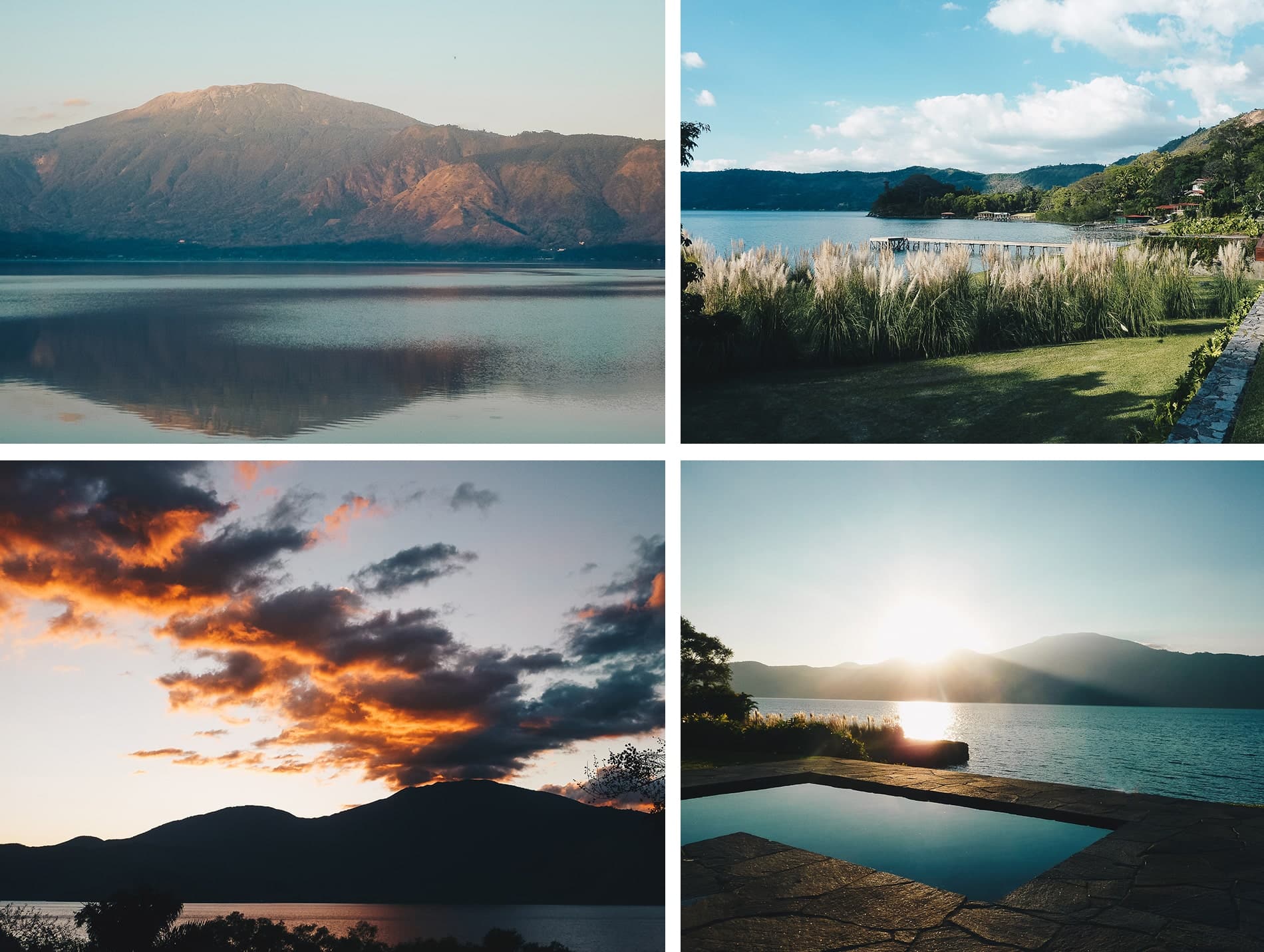
-
The ruins of the country
If you’re a history buff, the country’s particularly well-preserved remains are sure to interest you. El Salvador is renowned for its Mayan ruins, such as those at Tazumal, the most important in the country but also a temple with a bloody past, whose word origin means “the place where victims were burned”. To honor religious rites, human sacrifices were performed at the summit. An unforgettable experience for visitors who enter the world of the sacred pyramid. Mayan heritage is quite present in El Salvador, firstly through the Kekchi language still spoken by some Amerindians, but also through several sites in San Andrés, Casa Blanca and Joya de Cerén, considered the Pompeii of America.
The site of San Andrès, not far from Coatepeque was deserted and surprising (not a visitor in sight), as the pyramids were covered with moss and grass and had not been maintained over time!
Take the time to walk around the ruins and admire the contrast of colors thanks to the omnipresent surrounding greenery, which enhances the beauty of these sites.
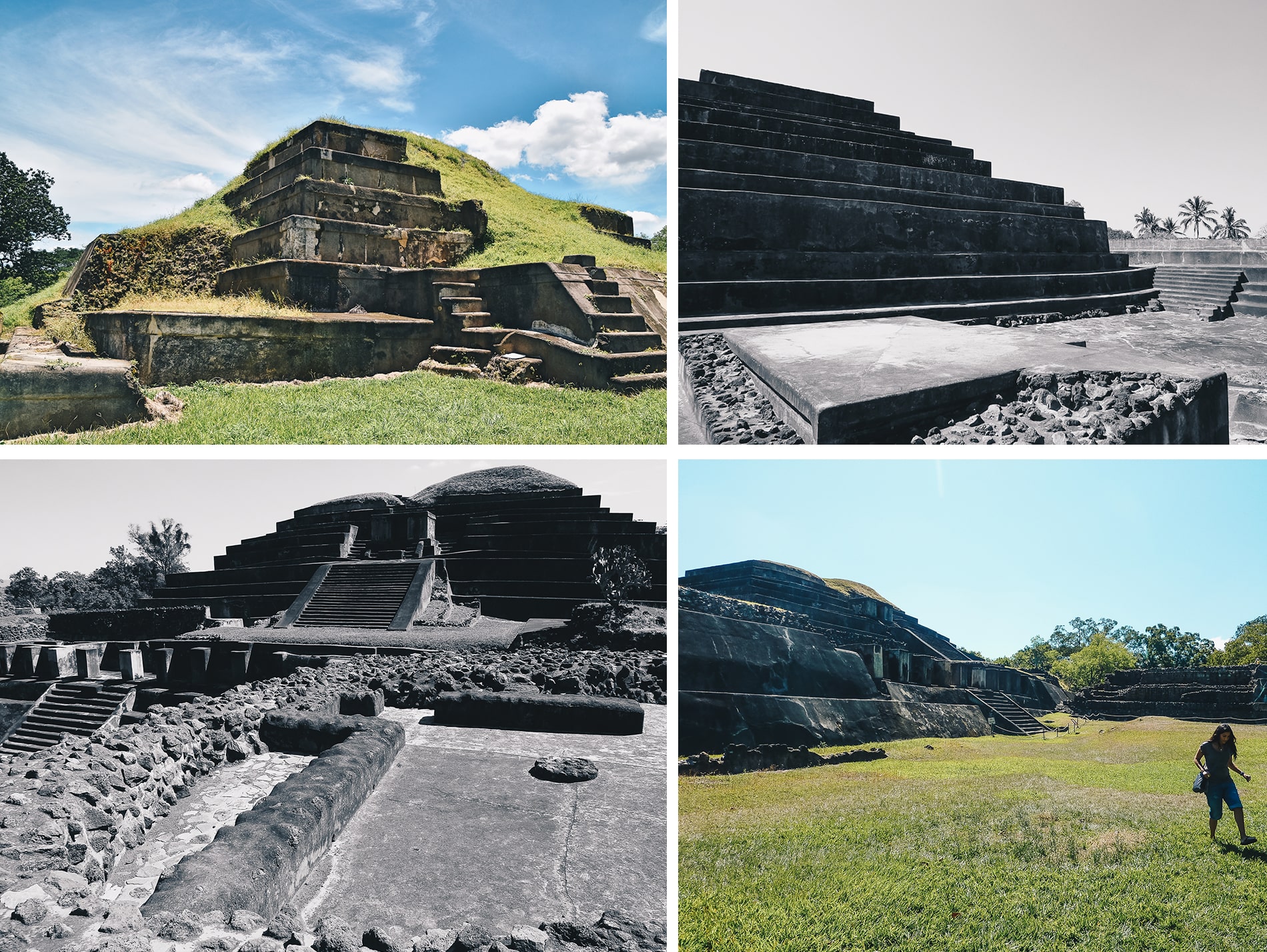
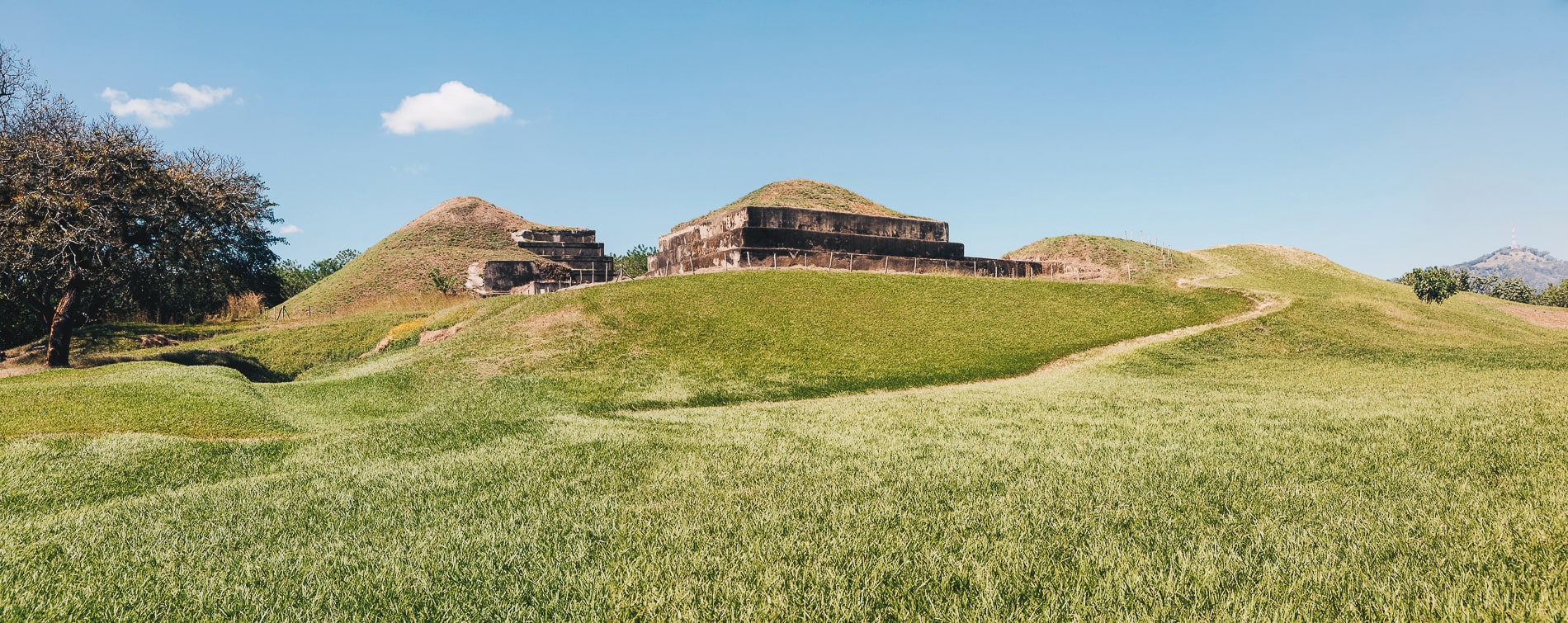
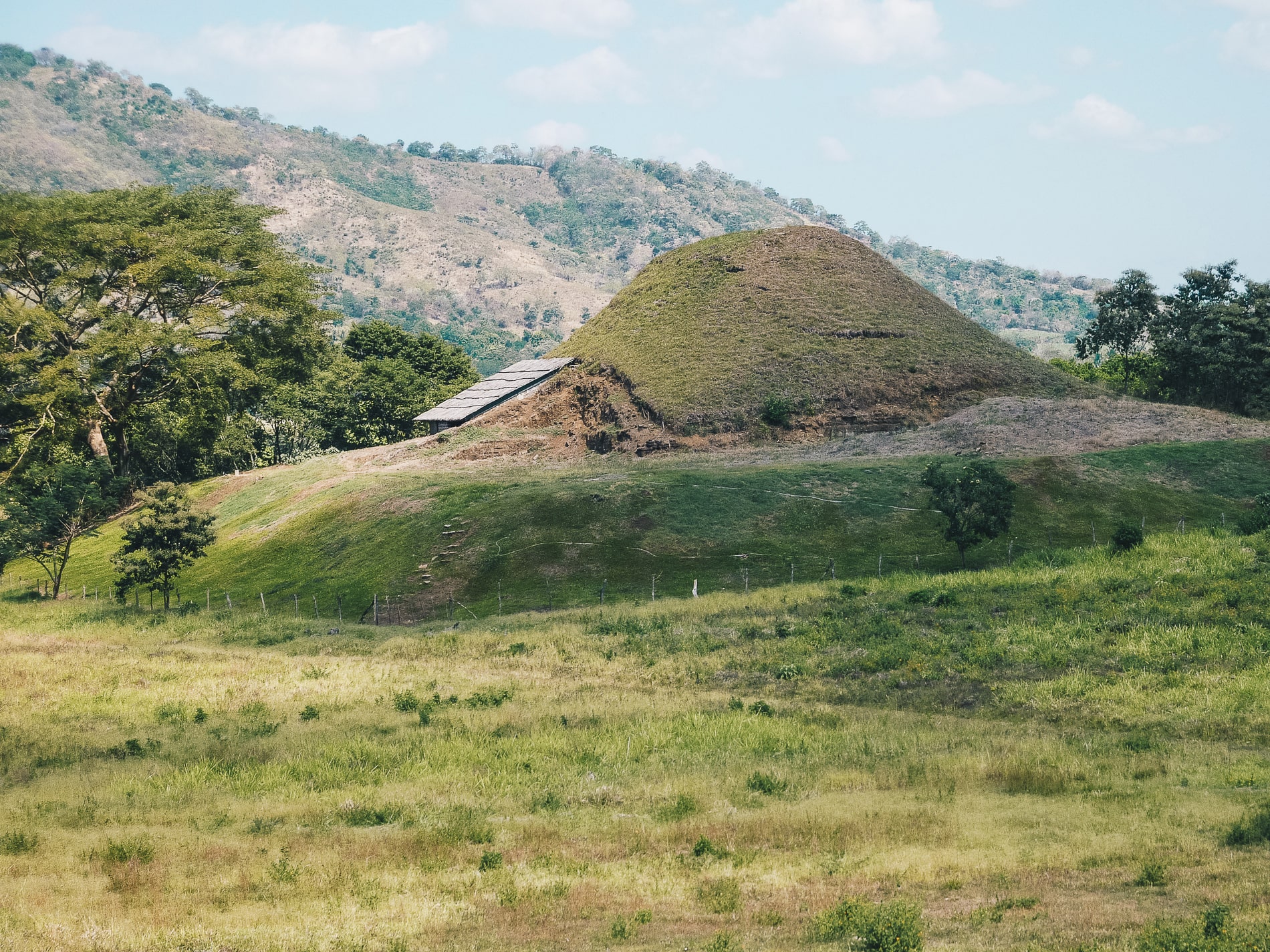
-
Black sand beaches
Head for the Pacific coast of La Libertad, via Playa El Tunco and Playa Sunzal, to discover the world-famous surf spots for beginners and advanced surfers, renowned for their relaxed atmosphere. If you’re looking for a nice place to have lunch with a magnificent view, go to the Erika restaurant facing the sea, where the food is delicious.
The beaches here are large and black sandy. Even if you’re not surfing, the coast offers lovely walks and sunset views. You’ll also find some nice hotels to relax in for a few days. Be very careful of the currents and violent waves on the Pacific coast.
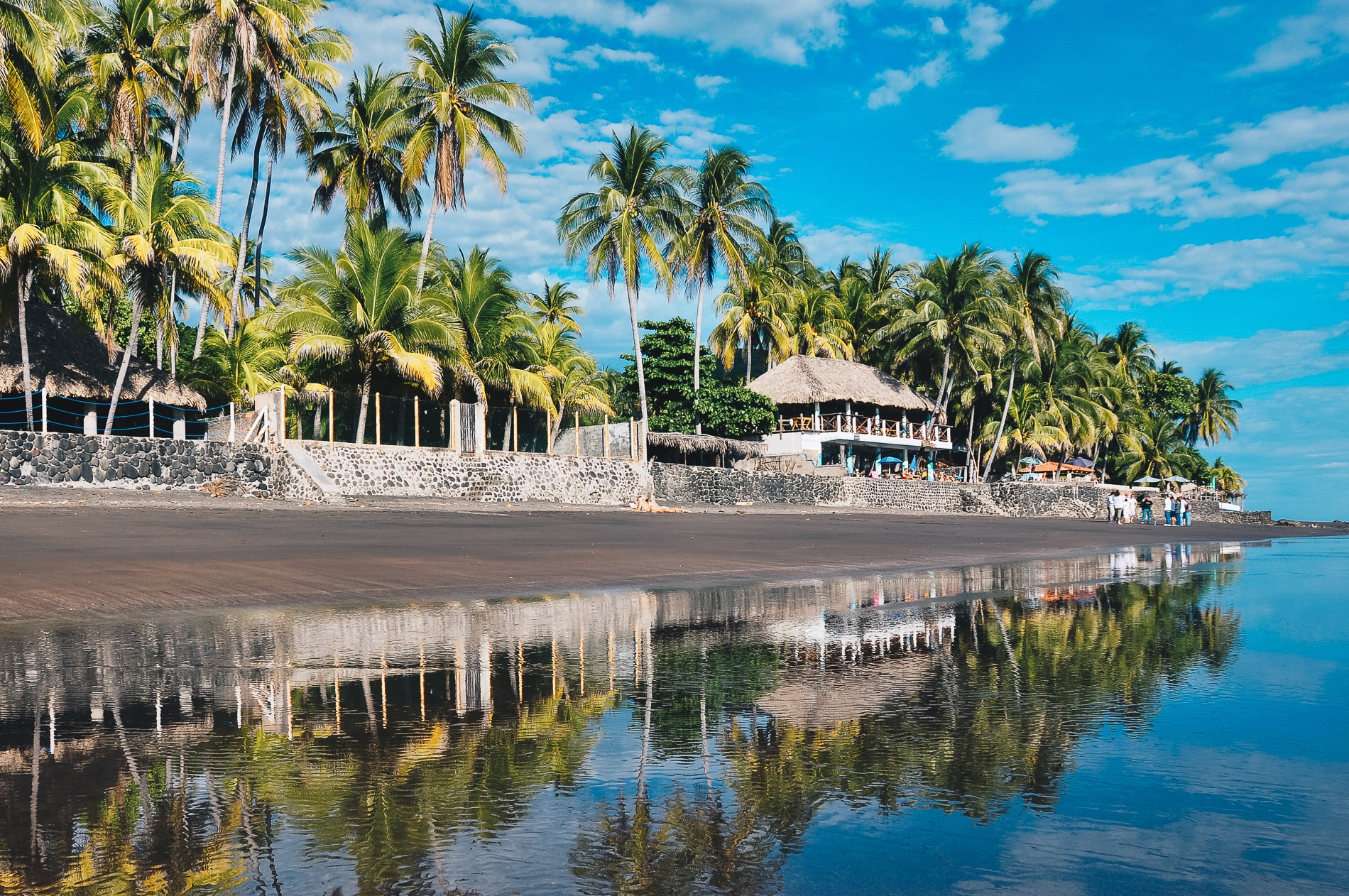
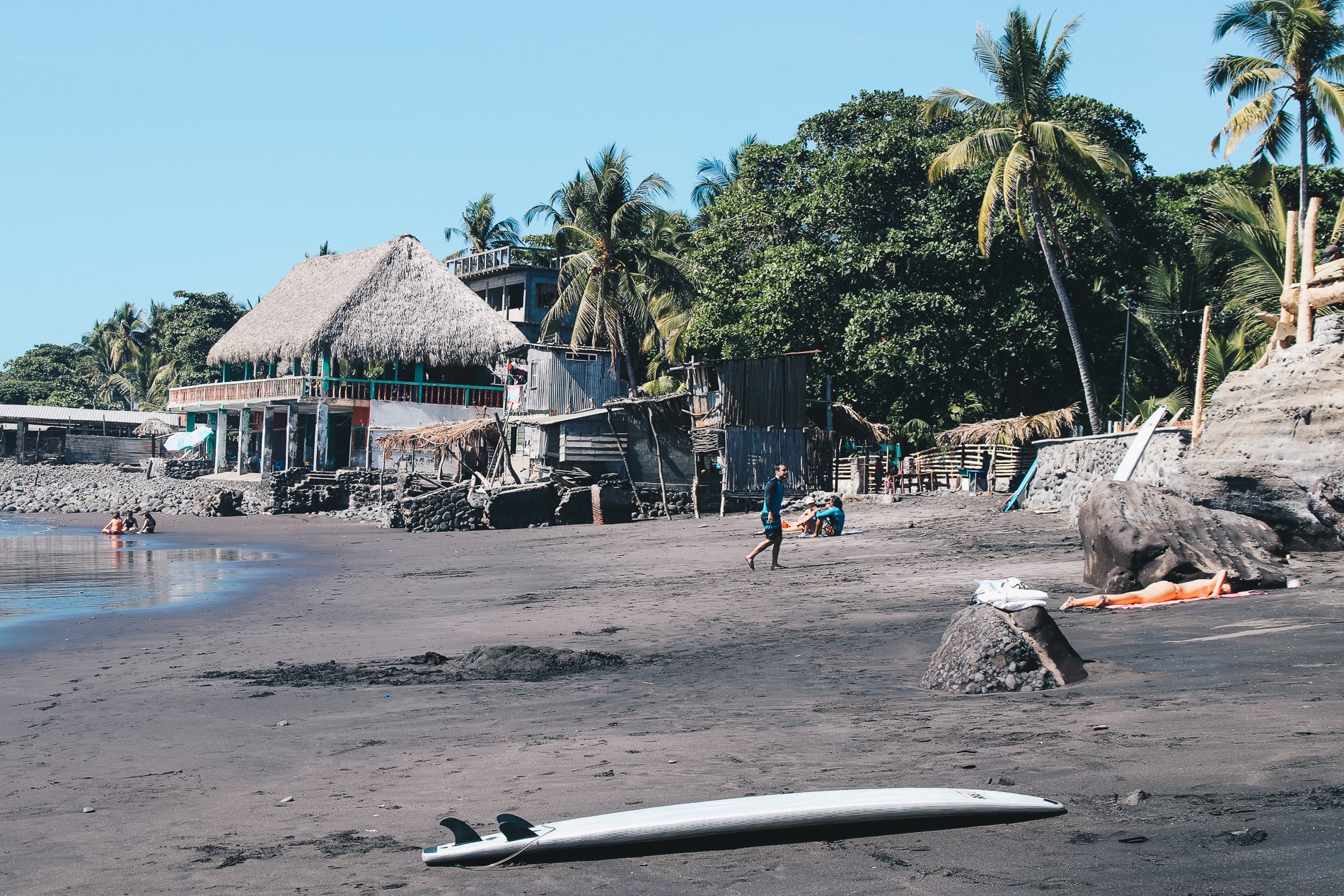
I haven’t mentioned all the country’s sights and attractions, but as you can see, El Salvador boasts beautiful towns with colonial architecture, natural waterfalls, hiking trails for trekking enthusiasts, charming, colorful villages and absolute authenticity.
Having travelled the length and breadth of the country, what struck me along the country’s roads were the mountains of garbage dumped on either side of the road and floating in the trees: garbage cans, furniture, cars and sometimes horse corpses! It’s pretty disgusting I grant you, but unfortunately the locals are not yet aware of the impact on the environment and are not educated to sort their waste. It is the only country on the continent without an environmental law. Maybe things have changed over the years, but we’ll have to check.
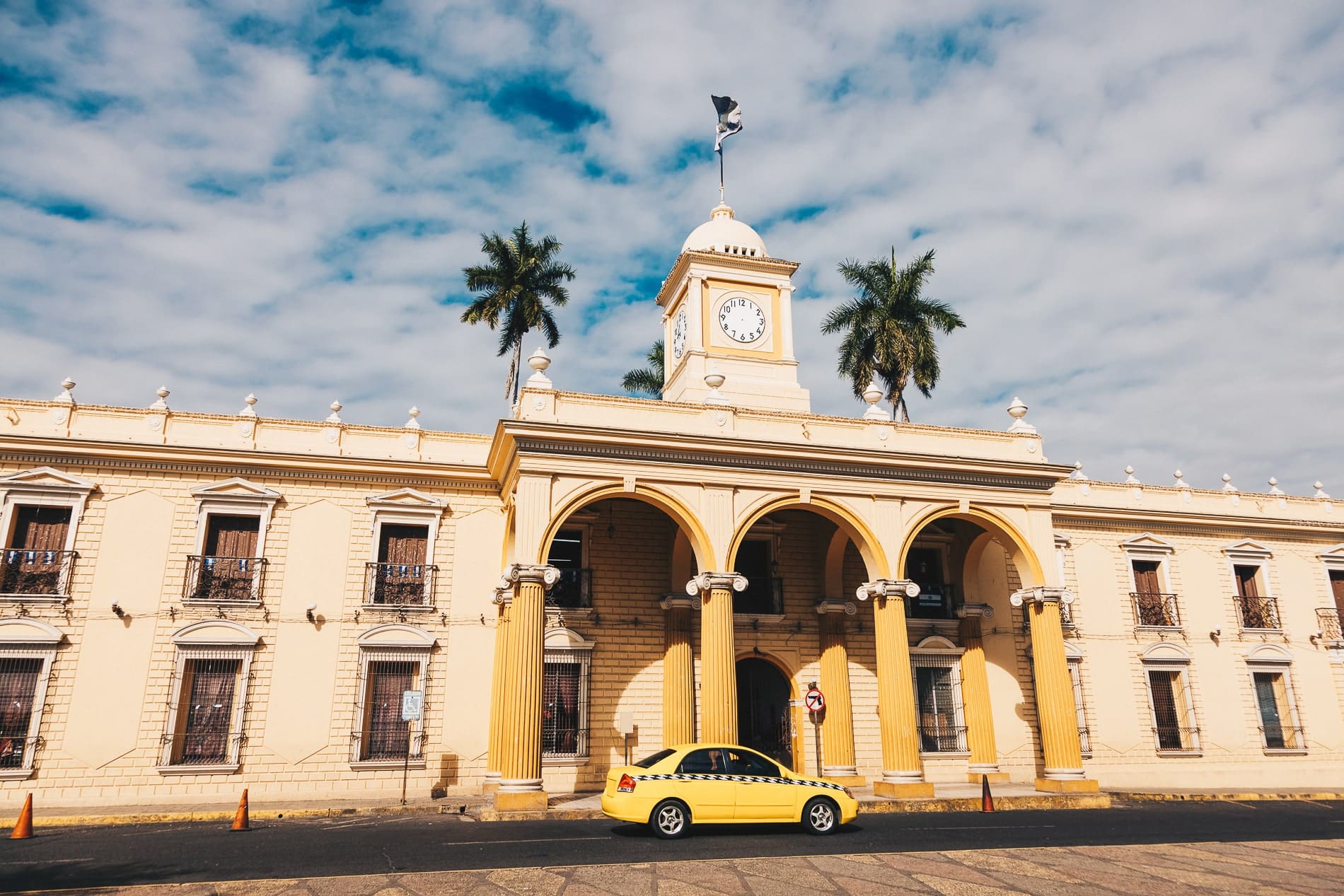
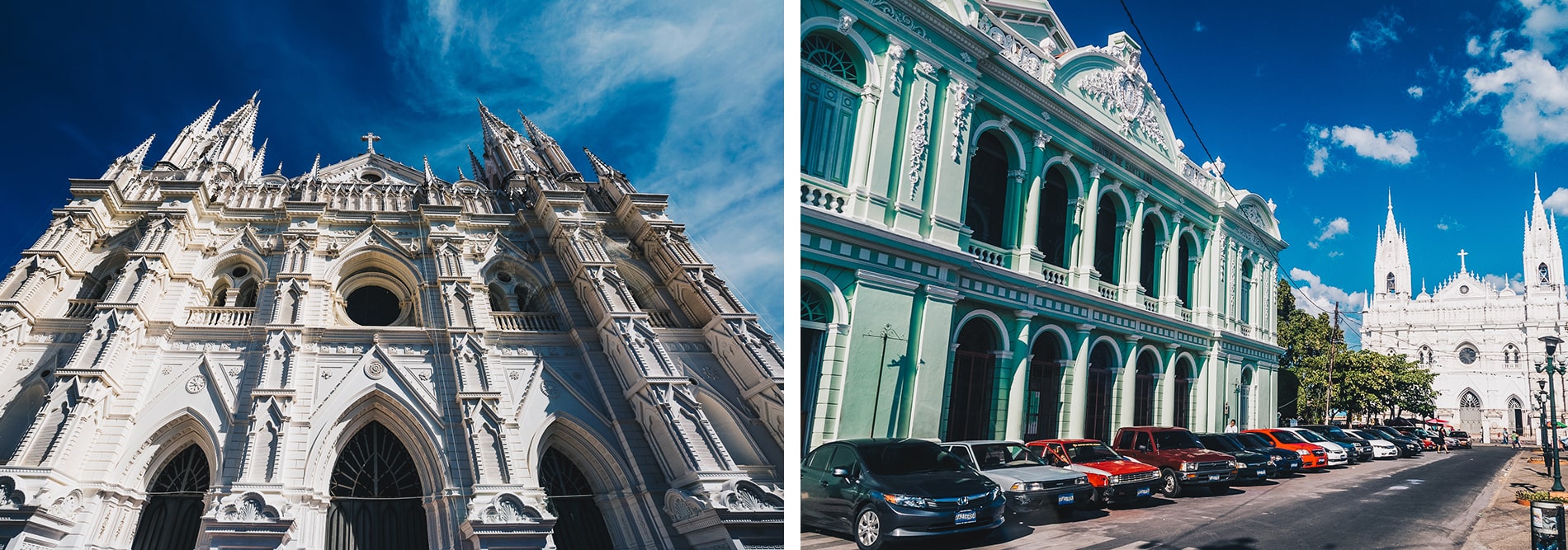
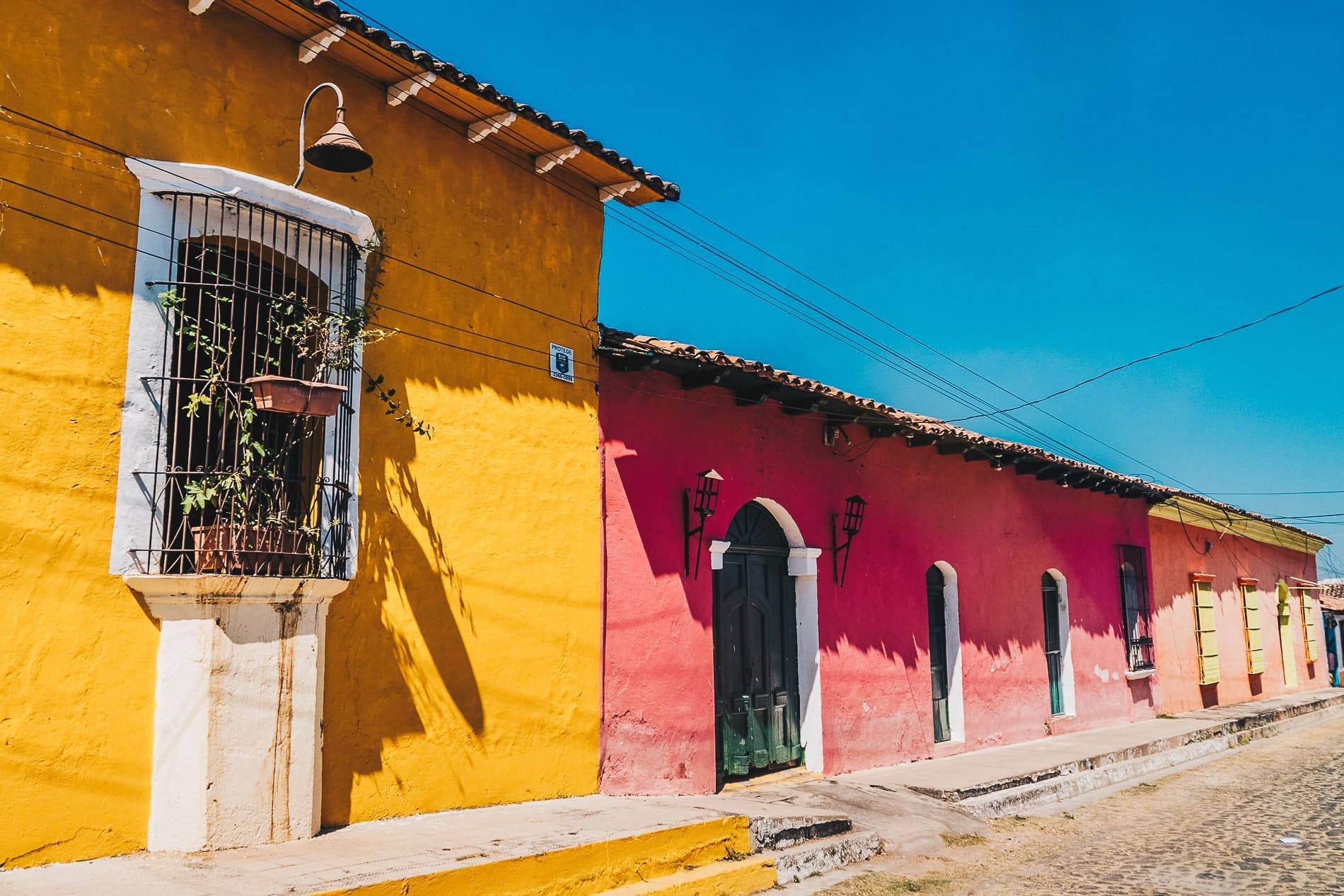
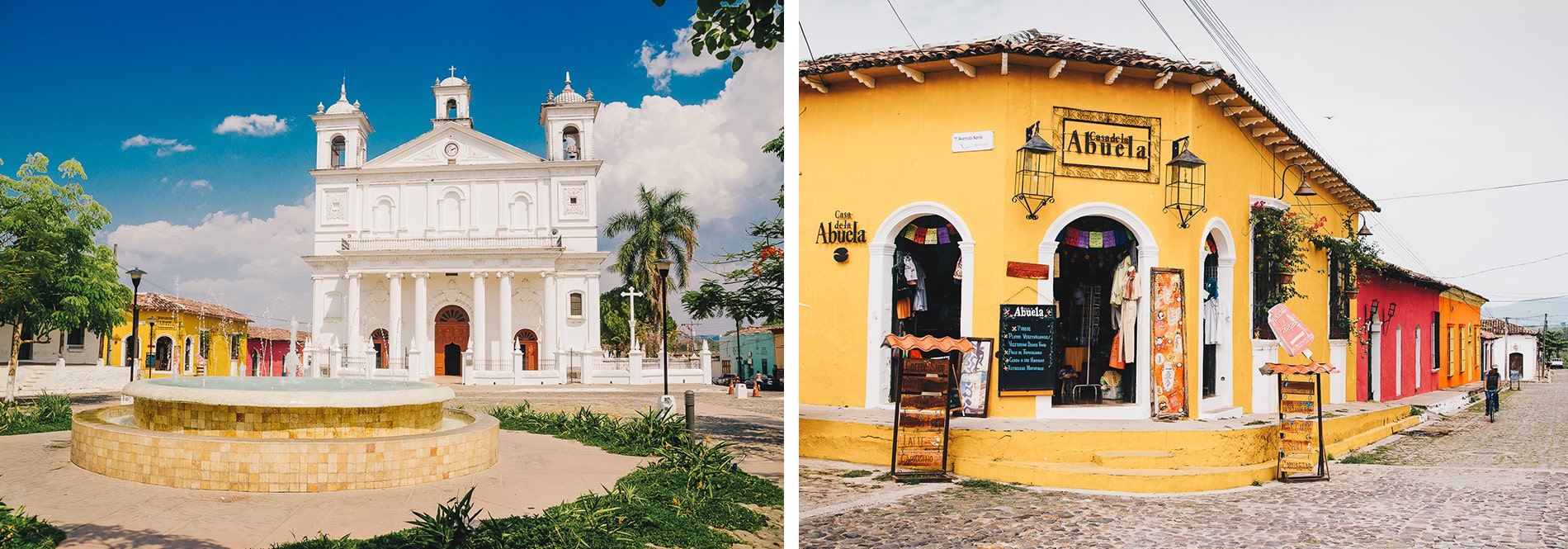
| SALVADOR’S SPECIALTIES
I was delighted to walk along the flower route because you’re cut off from the world, it’s a real breath of fresh air that you breathe! Enjoy the beauty of the landscape, meet the locals and taste the many local products. It was in El Salvador that I also learned to cook the best ceviche I’ve ever tasted on any of my trips to Latin America. I would like to thank the Salvadorian lady who had the patience to show me everything. Thanks to its coastal location, El Salvador abounds in seafood, including the highly prized lobster and other tasty tropical fruits. Here are a few specialities you won’t want to miss on your trip:
- The marriage : rice and bean mixture
- Visit pupusas : Pupuserías can be found all over the country. Pupusas are corn cakes filled with cheese, beans or meat.
- Visit elotes: hot corn on the cob, sprinkled with mayonnaise; ketchup and chilli pepper, a real delight
- The ceviche : fish marinated in lemon with onions, green chilli and coriander
- The chica : corn-based drink fermented with brown sugar
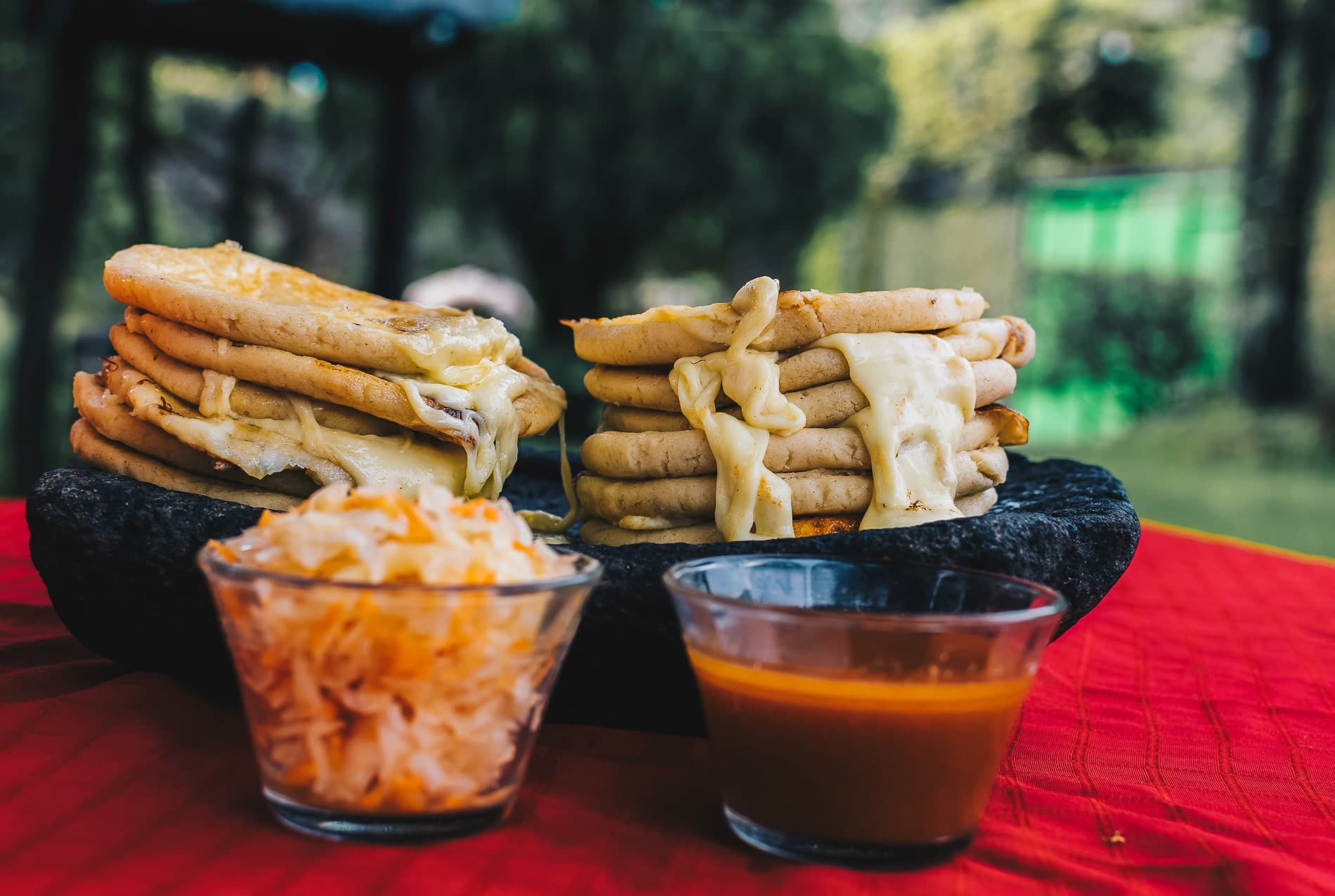
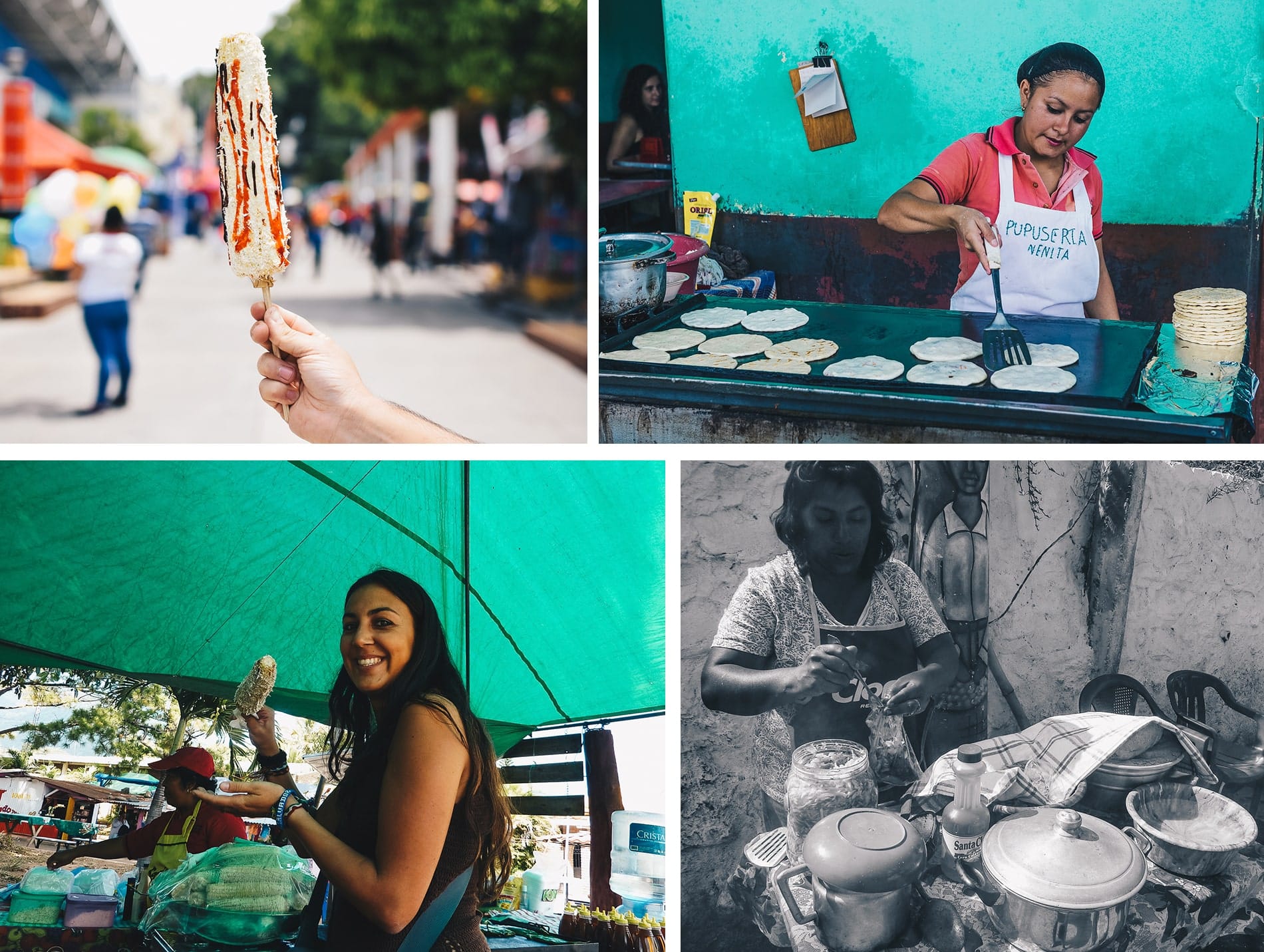
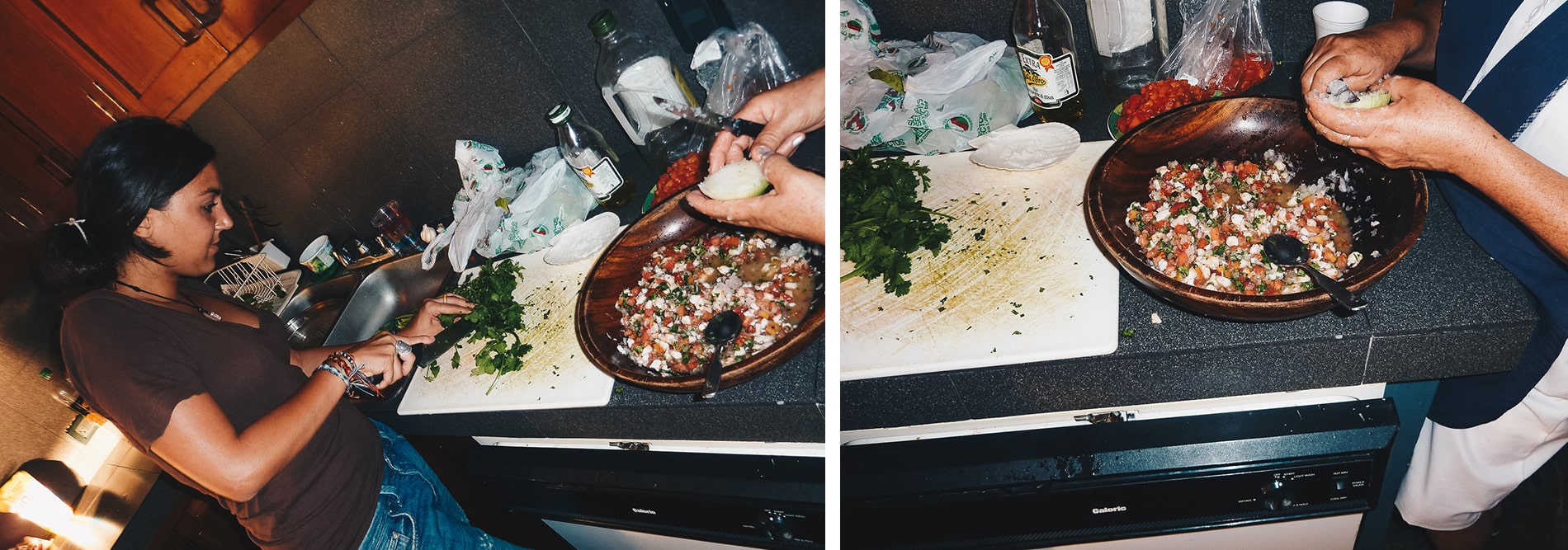
| WHY DISCOVER SALVADOR
You must discover El Salvador while there’s still time and it’s not a country affected by mass tourism! You’ll need at least 10 days to discover the splendors of this country, and you’ll appreciate its coastline, fauna and flora.
The country has 320 kilometers of Pacific coastline with deserted beaches, but El Salvador’s coastline is home to beautiful mangroves. In the western part of the country, the sand is black (volcanic) and the sea is constantly choppy, which makes surfers happy in search of waves and uncrowded spots, as in the La Libertad area, the coast closest to San Salvador.
You’ll go in search of El Salvador’s patriotic national symbol, a bird with turquoise-blue, green and orange plumage, called Torogoz, Talapo or Guardabarranco in the region and in Nicaragua.
El Salvador’s national parks are home to many of the same species as Costa Rica: spider monkeys, pumas, toucans, white deer, otters or quetzals (birds sacred to the Mayas and Aztecs) as well as thousands of species of multicolored butterflies, which you can observe from the village of Metapan near the forest of the Monte Cristo National Park. The vegetation includes tropical species such as mangroves, palms, coconut palms and agaves, as well as numerous plant species such as ferns, mushrooms and oaks… If you have the time, stop off at El Salvador’s largest national park, the Impossible National Park, in the department of Ahuachapan, a UNESCO World Heritage site. Its name, “l’Impossible”, refers to the difficulty of traversing it for the farmers and muleteers who transported the coffee. Today, it is home to 500 plant species, over 100 mammal species, 53 amphibians and reptiles, 285 birds and over 5,000 butterfly species.
El Salvador has no particular endemic flora, however, as a result of the many deforestation campaigns carried out to promote the cultivation of coffee, sugar cane, cereals and cotton.
I really loved the friendliness of the local people, who were astonished to see their country featured in a travel guide! Salvadorans are proud of their country and happy to share their knowledge with you. This will make your trip all the more enjoyable. In 3 sentences, that’s why I really liked Salvador:
- El Salvador is a surfer’s paradise with its numerous spots and long black sand beaches.
- El Salvador’s landscapes are extremely varied: beaches, archaeological sites, waterfalls, typical villages and volcanoes.
- The hospitality of the locals, which is not lost here
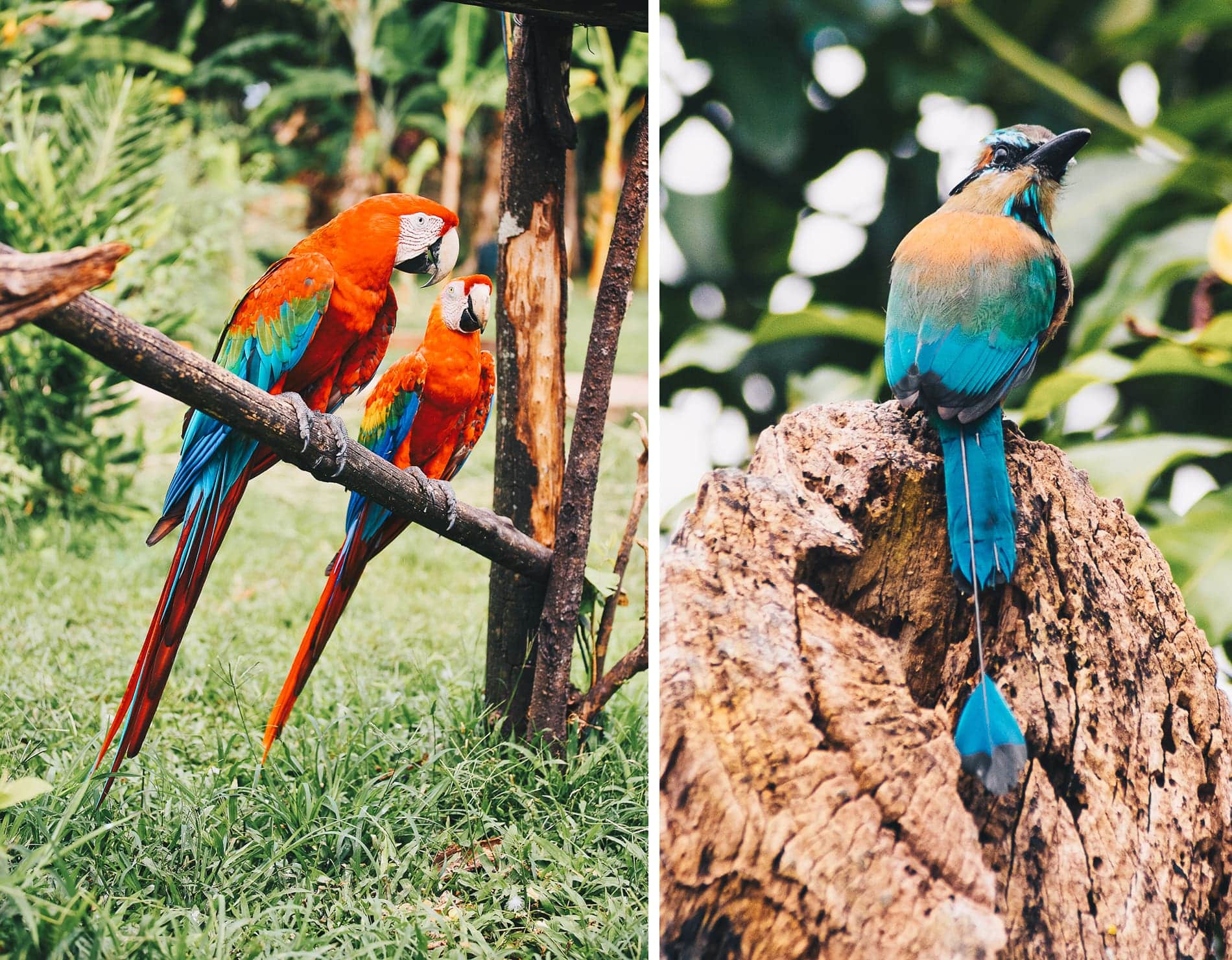
| SECURITY IN THE COUNTRY
El Salvador has long remained at the top of the list of the world’s most dangerous countries, and caution is still the order of the day. Back when I was there, the climate was pretty tense, I’m not going to lie to you! The night before we arrived at the beautiful lakeside house, the neighbor and her children had been kidnapped from their house and gagged for a few hours in order to obtain money! Recent reports such as Exclusive Investigation have not helped to showcase this beautiful country. Yes, the MS-13 and 18th Street gangs still fight each other, especially in the capital, but I’ve never heard any stories about foreign tourists visiting the country. Year after year, gang-related violence diminishes, and the country is becoming better known for its magnificent landscapes and the warmth of its people.
During my trip, I didn’t have this feeling of insecurity, except that in the streets, at tourist sites or on buses, you often see armed soldiers with rifles! At the same time, after a few months crossing Central America, you soon get used to it, and I’d even say it’s rather reassuring. For tourists, the risks are much lower, especially as the tourist police have taken the initiative of securing some of the most important sites.
Salvadorans have no fear of death and are very religious people. Here, the motto is emblazoned all over the place, especially on public transport: « God, Union and Freedom » as well as « God in front and me at the wheel » which means god in front and me at the wheel, which is reassuring, isn’t it?
If I were to give you one piece of advice, don’t stay long in the capital. San Salvador, (we didn’t visit it at all), one of the world’s 50 most violent cities. Avoid remote areas and sensitive neighborhoods. Be careful when you go out, and don’t show off all your valuables. Don’t go out alone in the evening, don’t attract attention and be wary all the same. These are precautions to be taken in all Latin American countries
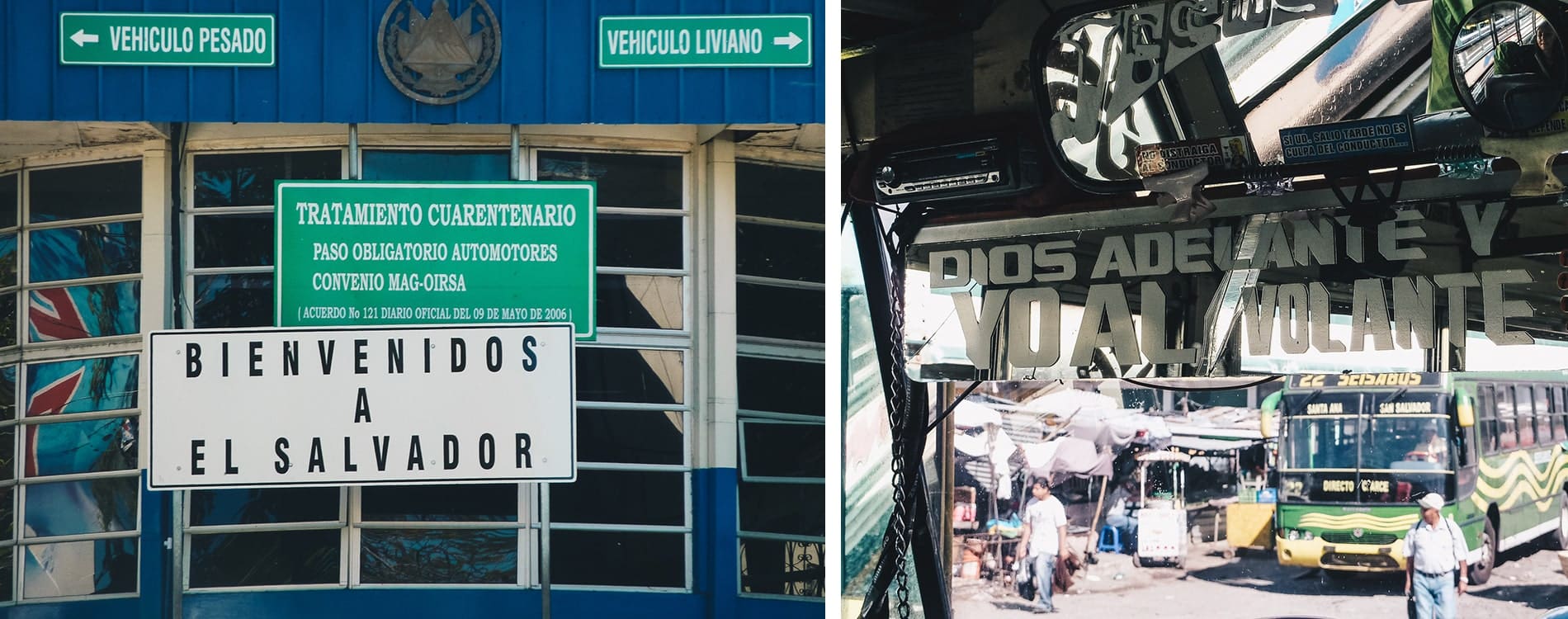
El Salvador remains a small country that can be visited on its own in 10 to 15 days, or combined with Honduras or Belize for snorkeling and diving, for example. Please note that as an accredited bespoke travel designer, I offer to accompany you in the creation of your tailor-made trip to Salavdor and create a personalized itinerary to suit your needs. Please send me an email at : contact@mademoiselle-voyage.fr
We can provide you with a driver and a car, as well as a French- or Spanish-speaking guide. Our customers are always delighted with their experience in El Salvador and thank us for putting together a trip off the beaten track.
